-
Optimizing Sickness
Perhaps the least optimized way to spend your time is evaluating whether the present moment is sufficiently optimized.
This type of thinking can become pathological, and it doesn’t stop with time. It can extend to everything.
Sure sure, Abe Lincoln, if you had an hour to chop down a tree you’d spend 45 minutes sharpening your axe. Here’s what you won’t be doing: Thinking about whether it would actually be more optimal to spend 44 or 46 minutes.
“Am I doing this right?” is a good instinct. It comes from curiosity and humility, a desire to do better, but this question informs more than 8% (or 11%) of your time, you’re decidedly not doing it right.
You probably aren’t having much fun either.
Does this mean ceasing the quest for knowledge, taking courses, optimizing? Of course not. It just means leave those things where they are. When you step out of them, you’re stepping on to the stage, on to the field.
Arrive where you are, as you are.
When you allow optimization sickness to take over your thinking, it can begin to eat its way into places that are at best goofy and at worst deeply sad.
You see talk from people about optimizing their friends: Are they friends with people who “make them better”?
Yuck.
The place in my life where this thinking has reared its ugly head is “Am I optimally spending time with my kids? Are we doing the correct activities? Am I balancing the right amount of loveydove and discipline? The right amount of novelty and familiarity?
I will continue to seek to be a better parent, but when I’m with my kids? Fuck this thinking. It is the least optimal way to be with them. I need to be present, attentive, listening, feeling, smelling, just being here.
Optimization is the furthest thing from this.
When you’re used to living in the tepid soup of optimization, it can be hard to break free, but one trick that helps me is becoming aware of how deeply uninteresting it is next to real sensations.
It’s like licking a postage stamp depicting ice cream vs. eating actual ice cream.
-
Falling Back in Love With Photography
I can’t tell you how nice it has been to fall back in love with photography after getting pretty numbed out through many years doing it professionally.
I would urge anyone in the same boat to seriously consider taking another look at film photography.
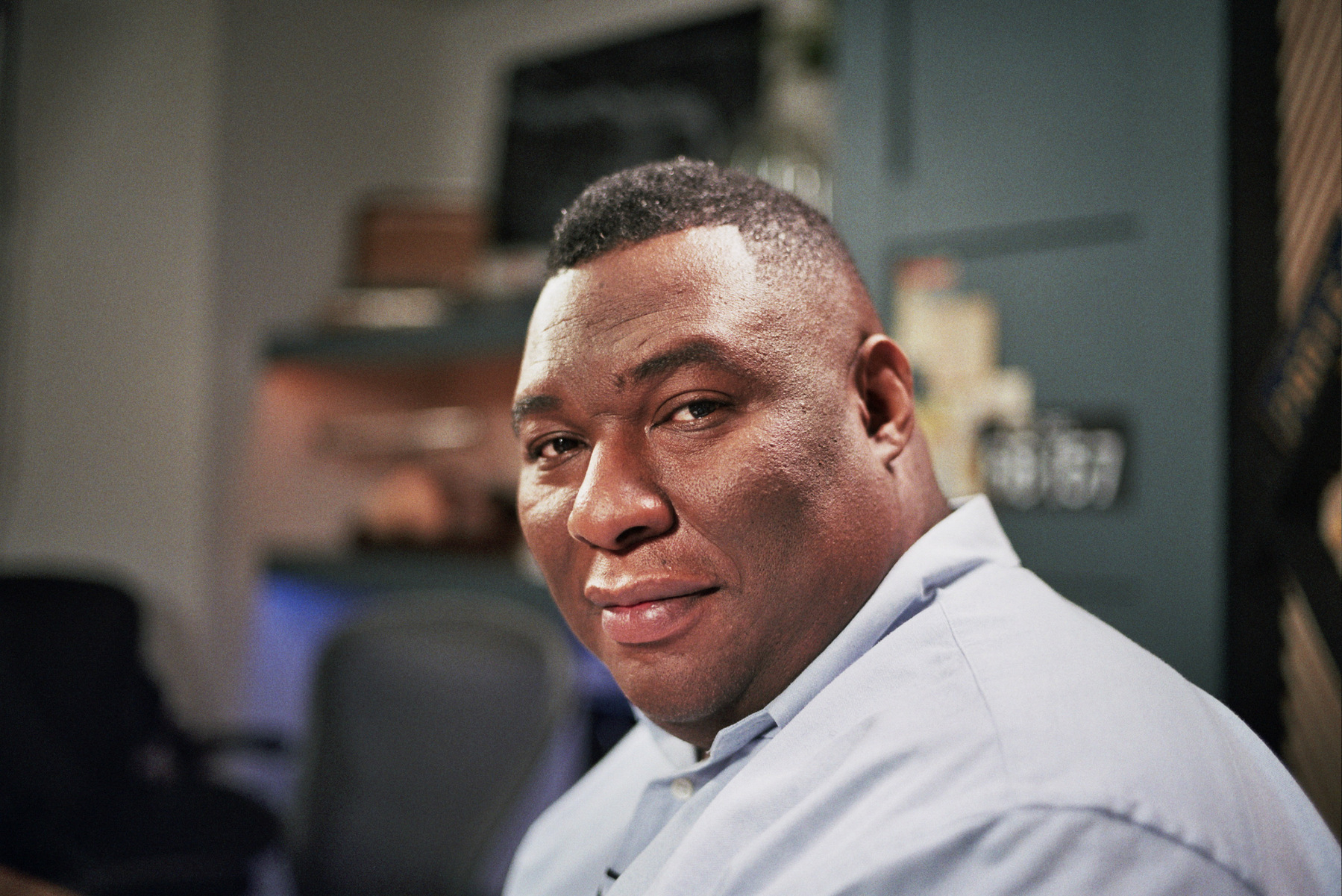

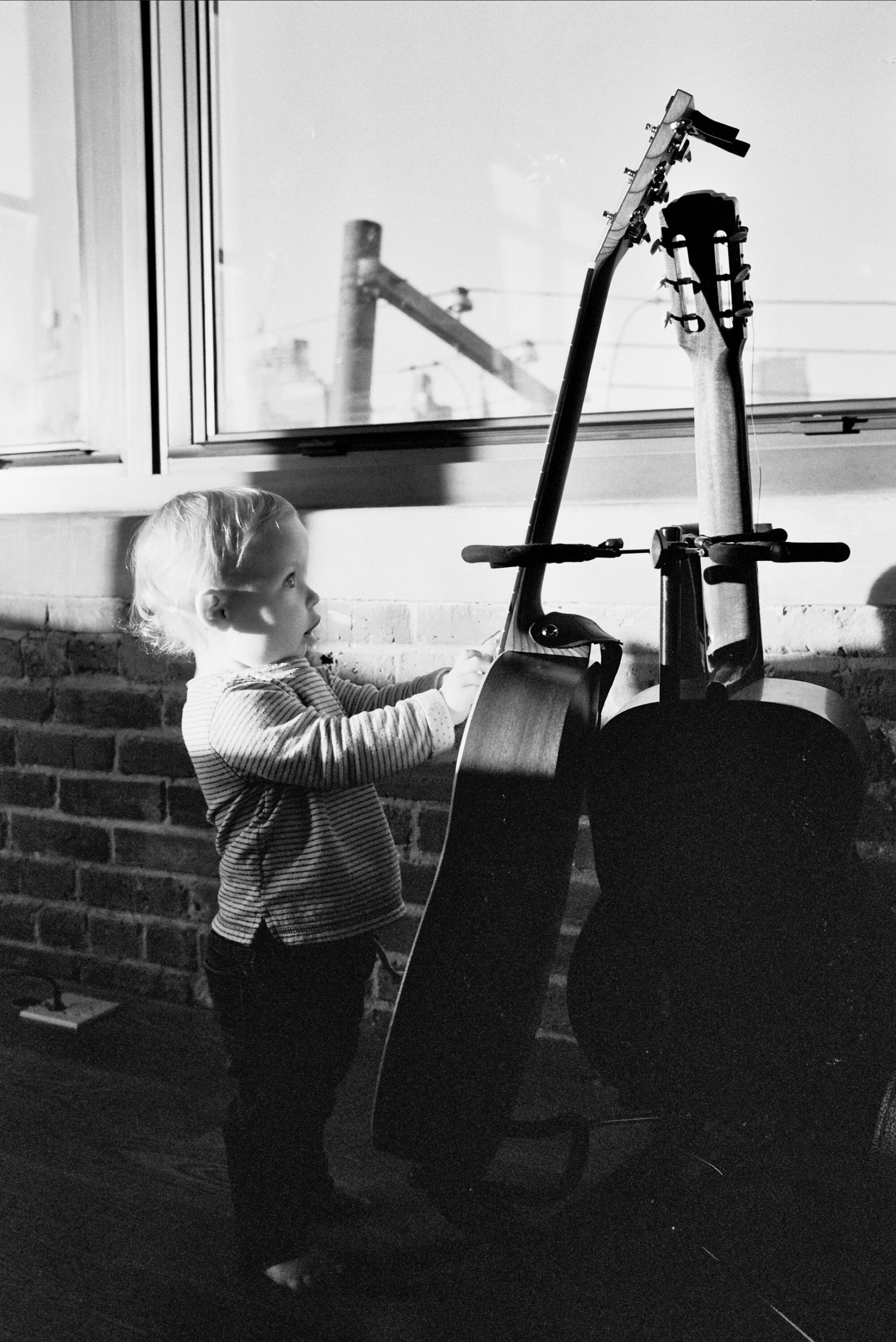

Film photography is
- (way) more fun than digital,
- better quality than digital for almost everything, and
- _significantly less expensive_ than digital (yeah you heard me)
Supporting evidence for my claims is way too overwhelming to cover, but here are a few points:

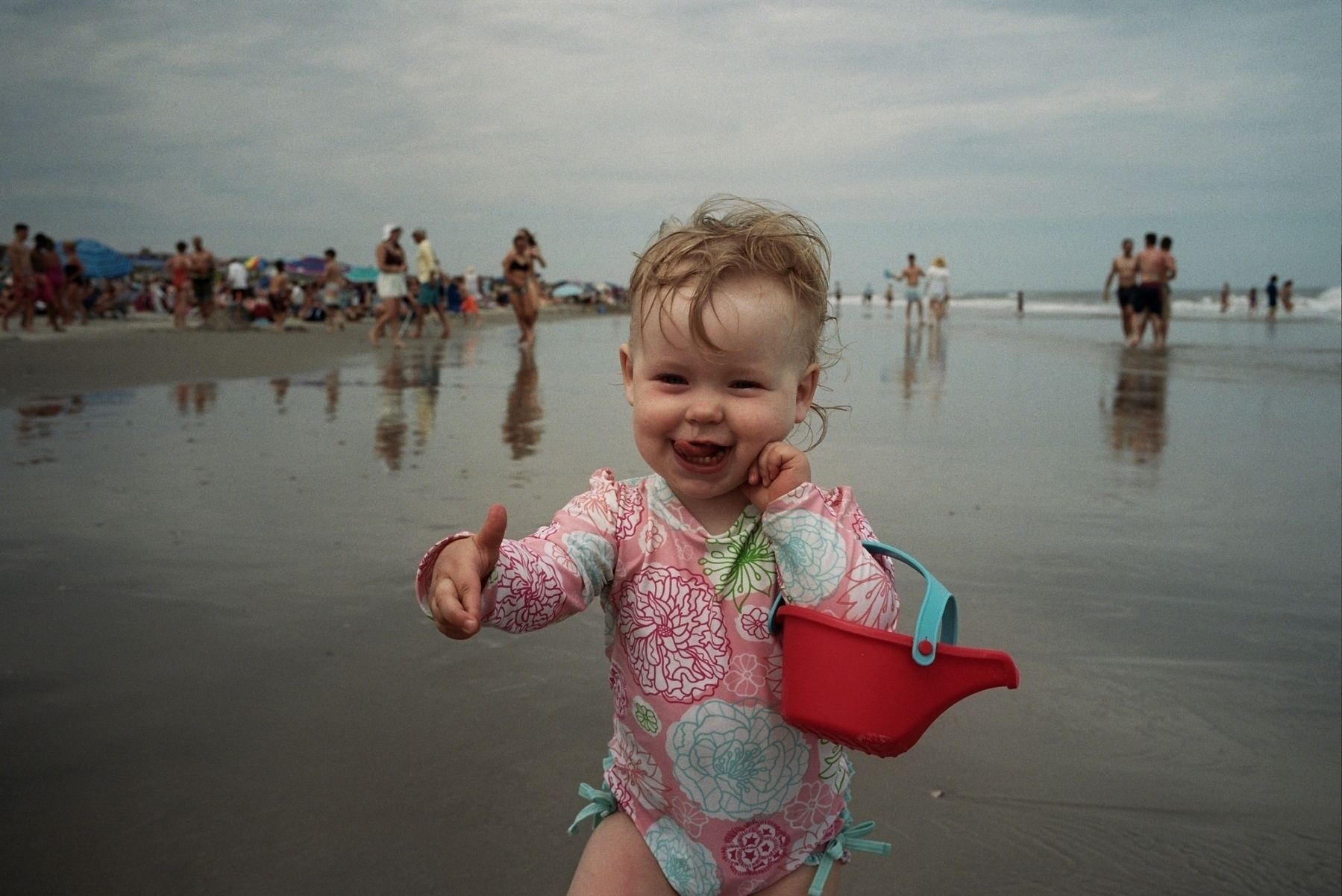
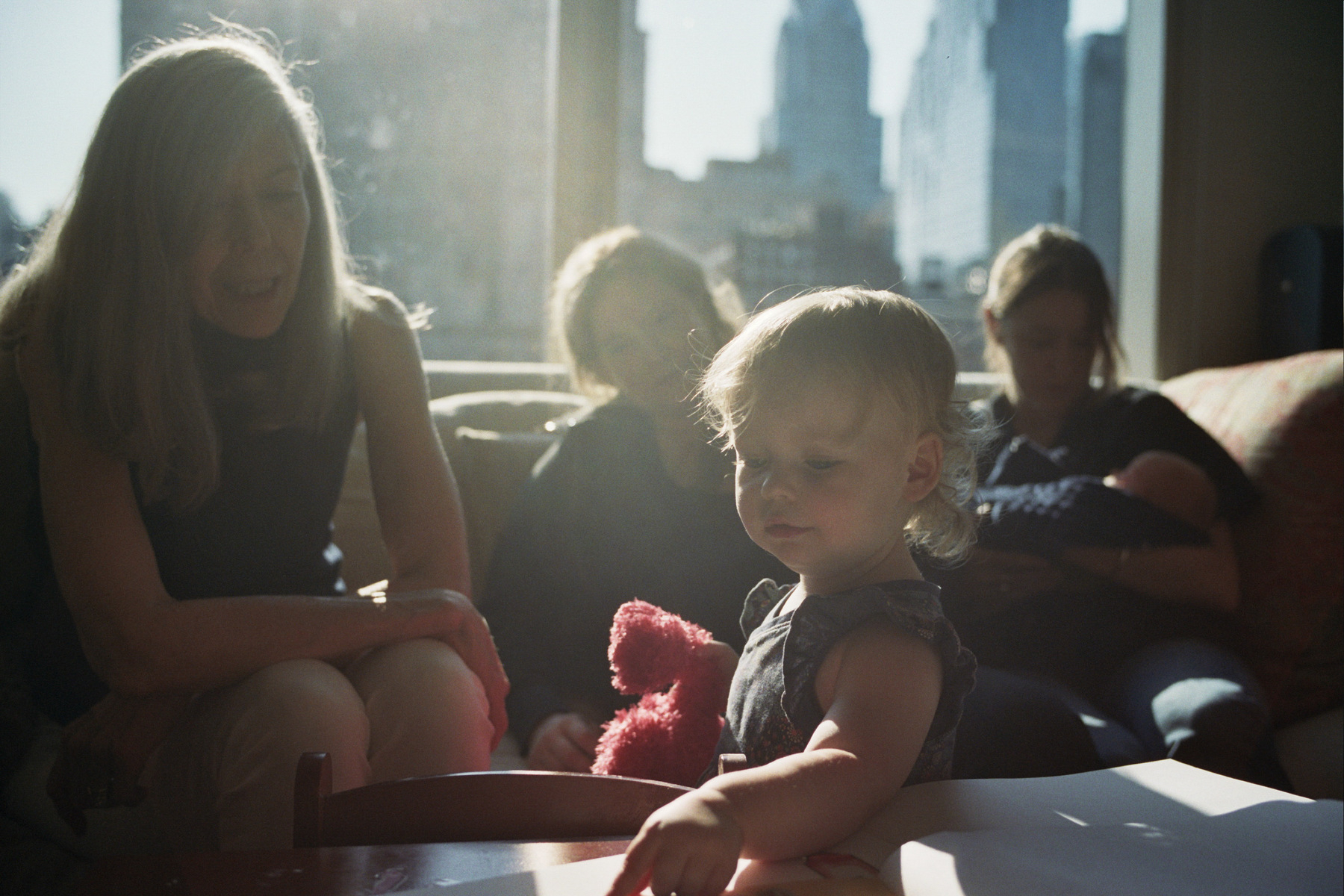

Lack of constraints is terrible for creativity. Unlimited, automatically-exposed images that you can check immediately upon shooting (photographers refer to this as “chimping”) creates an unaware, disembodied, screen-centered photography experience.

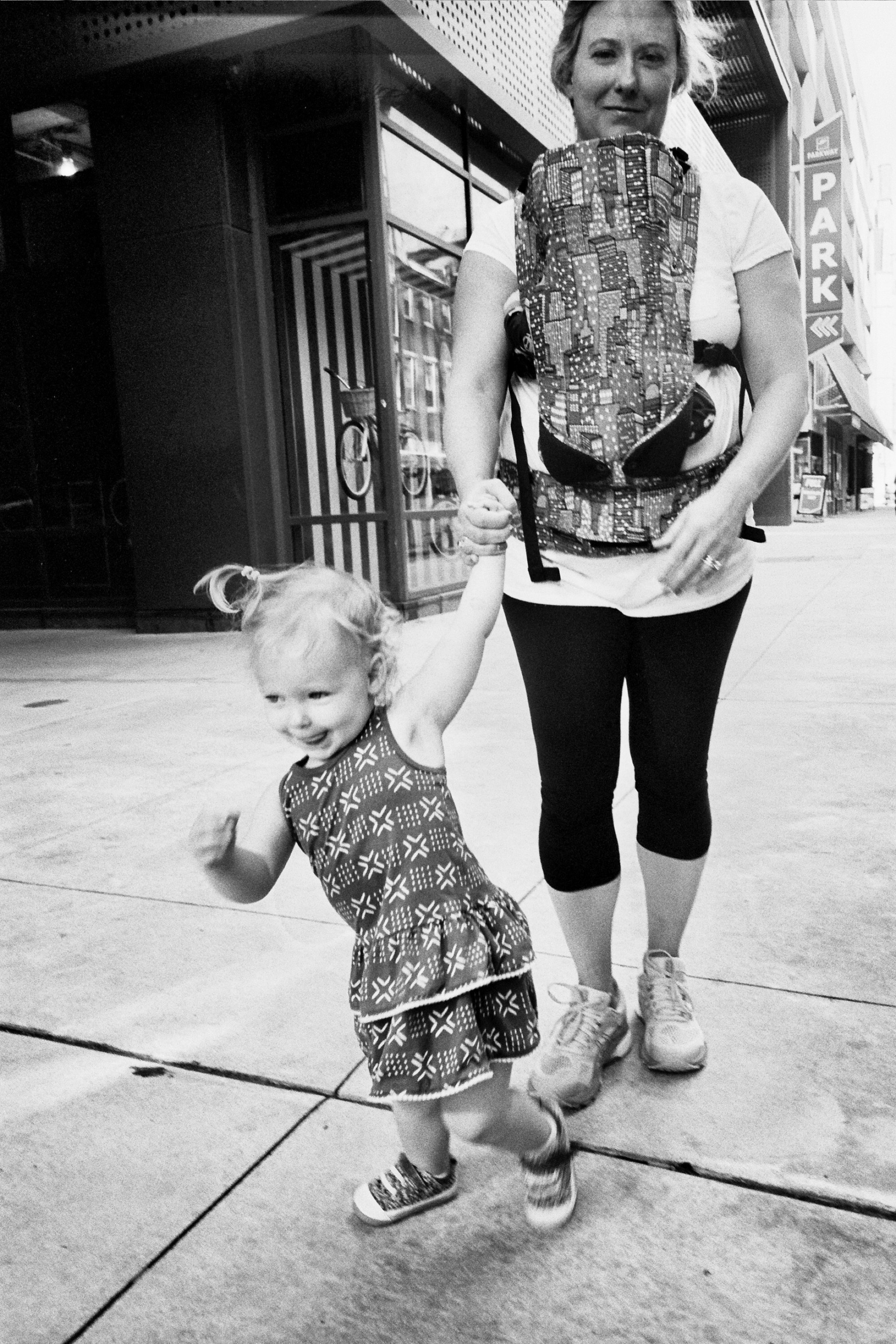
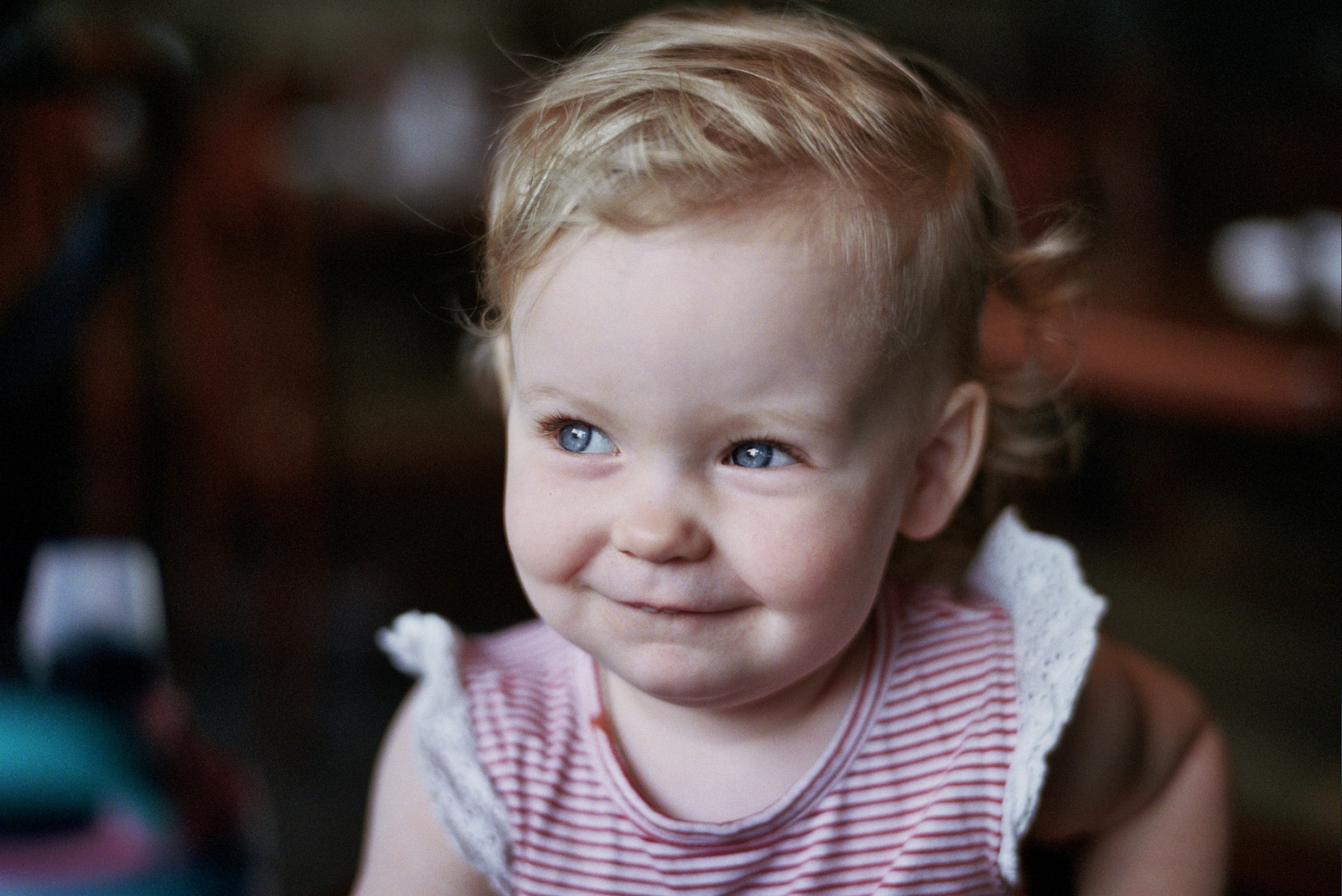

Knowing you’ve only got a limited number of shots makes you take them with much greater care, and not being able to chimp keeps you in the moment, seeing, experiencing.
And don’t even get me started on editing.
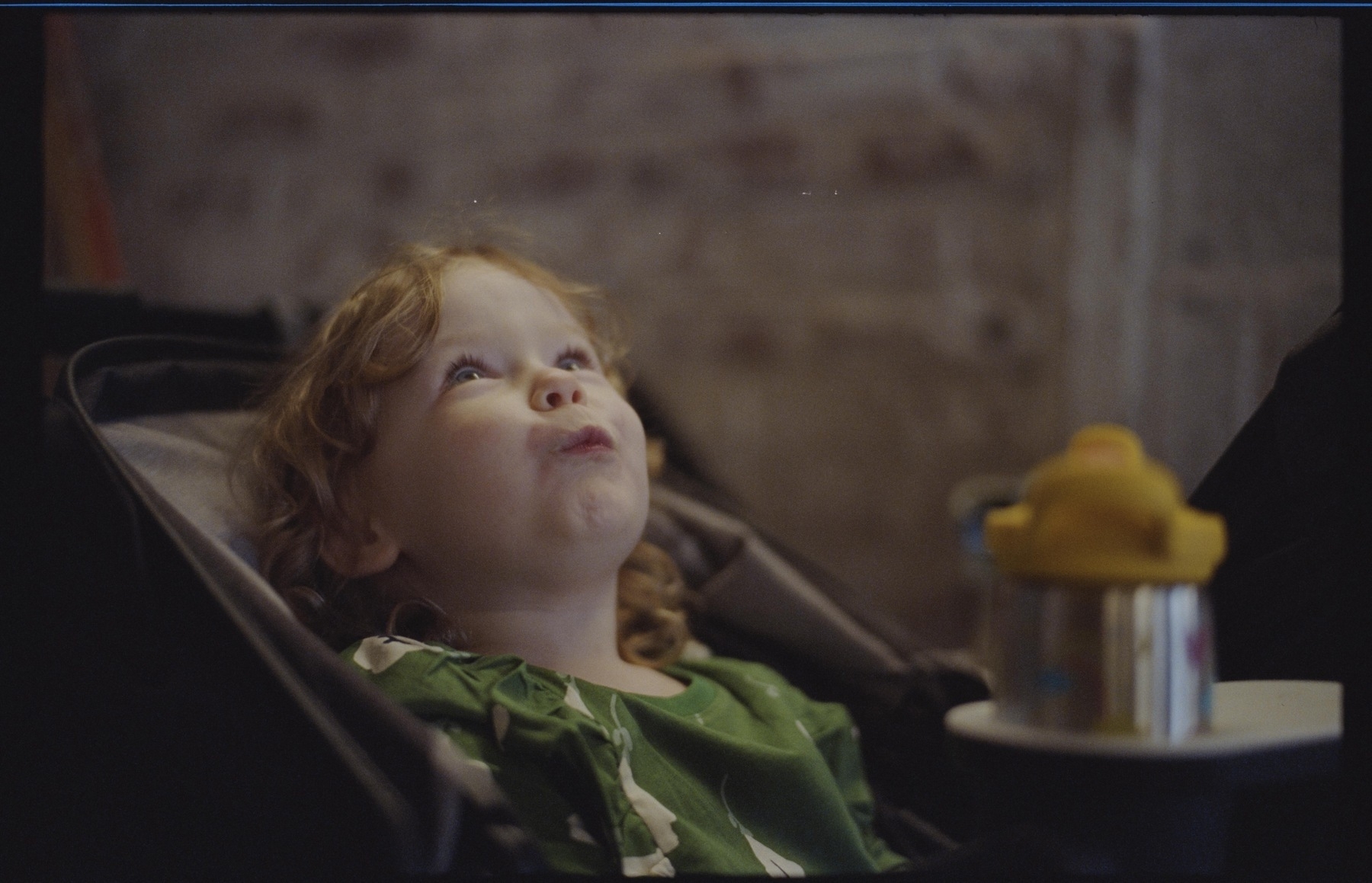
Going through hundreds of digital images is anxiety-producing, tedious, and soul-draining, comparing slight differences between 25 of the same shot to figure out which one is the keeper… We end up with thousands of unedited photos in our backlog that never see the light of day.
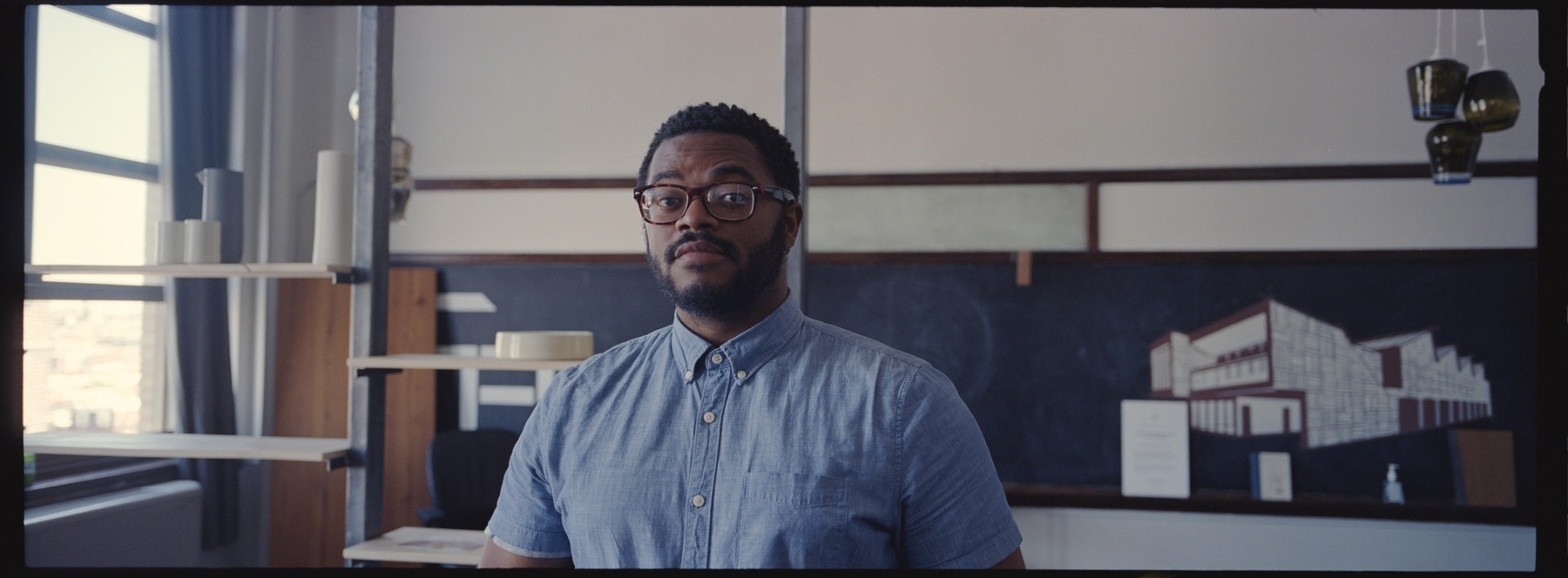
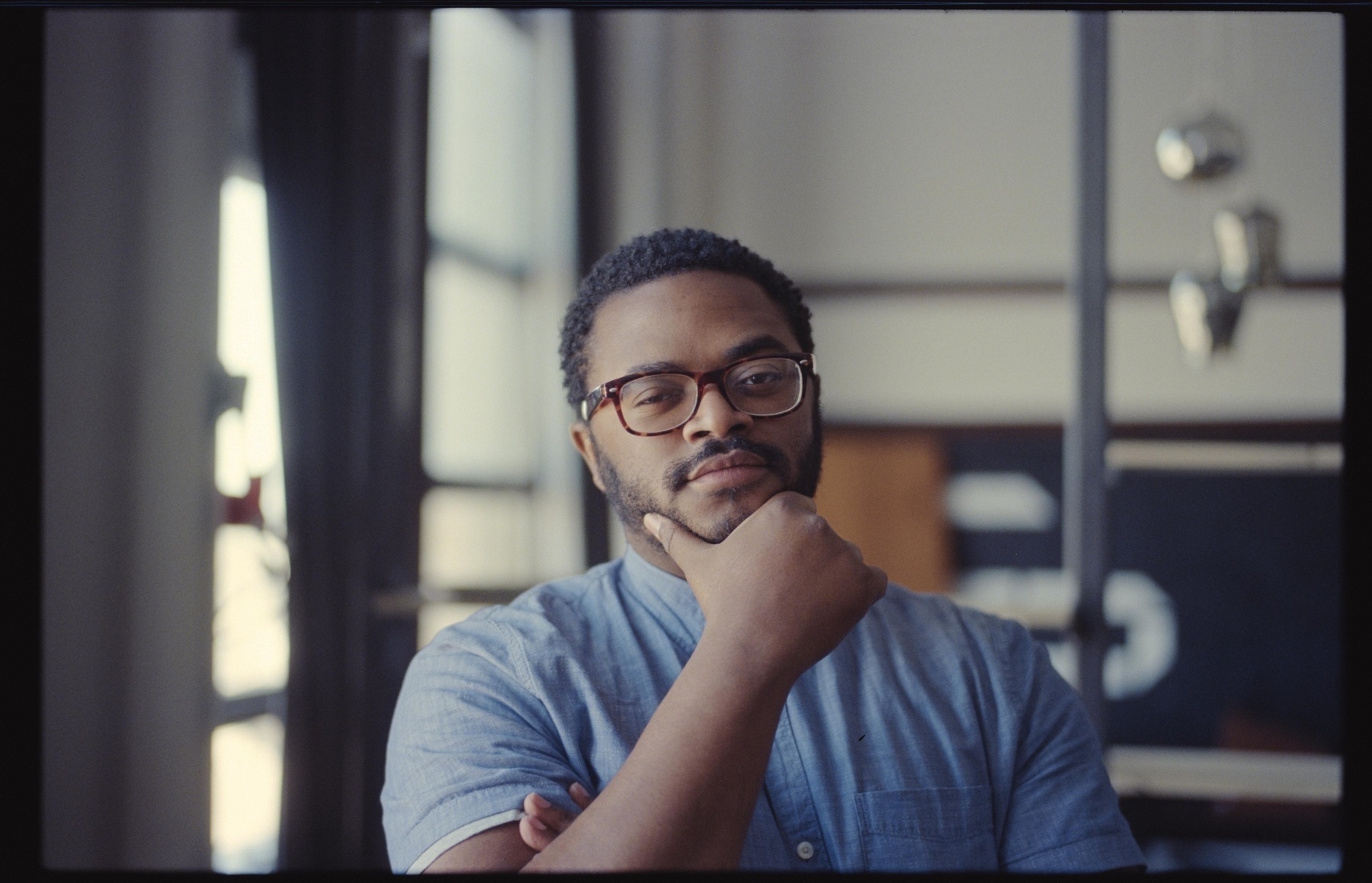
With film, the editing experience is the exact opposite: You _can’t wait_ to see your developed images. Each keeper feels like a gift from the gods. There is intense excitement and joy every step (the feeling is even better when you develop yourself).
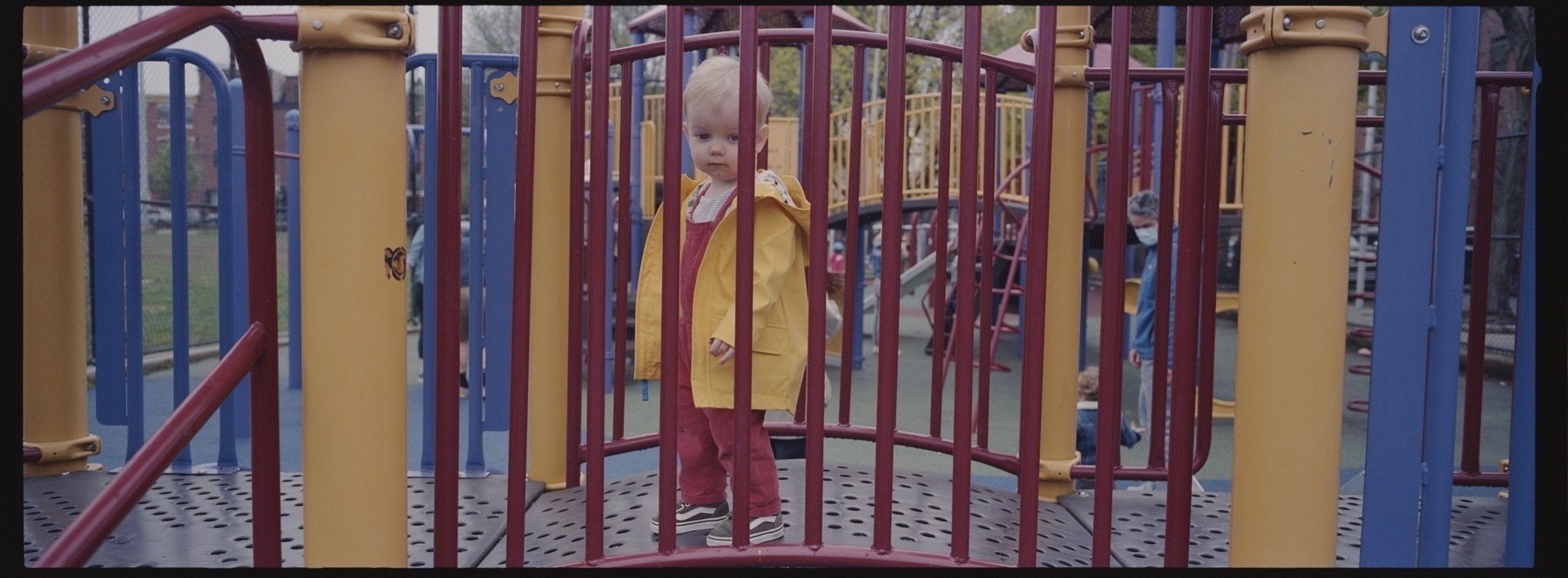
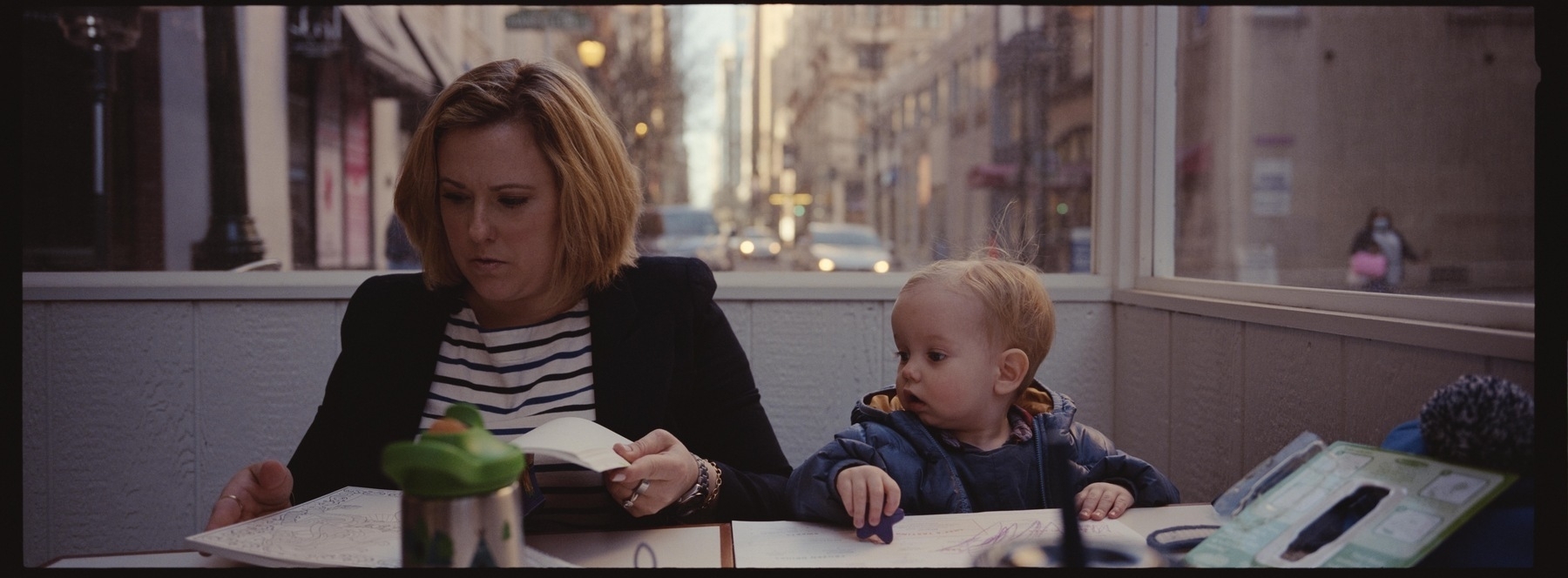
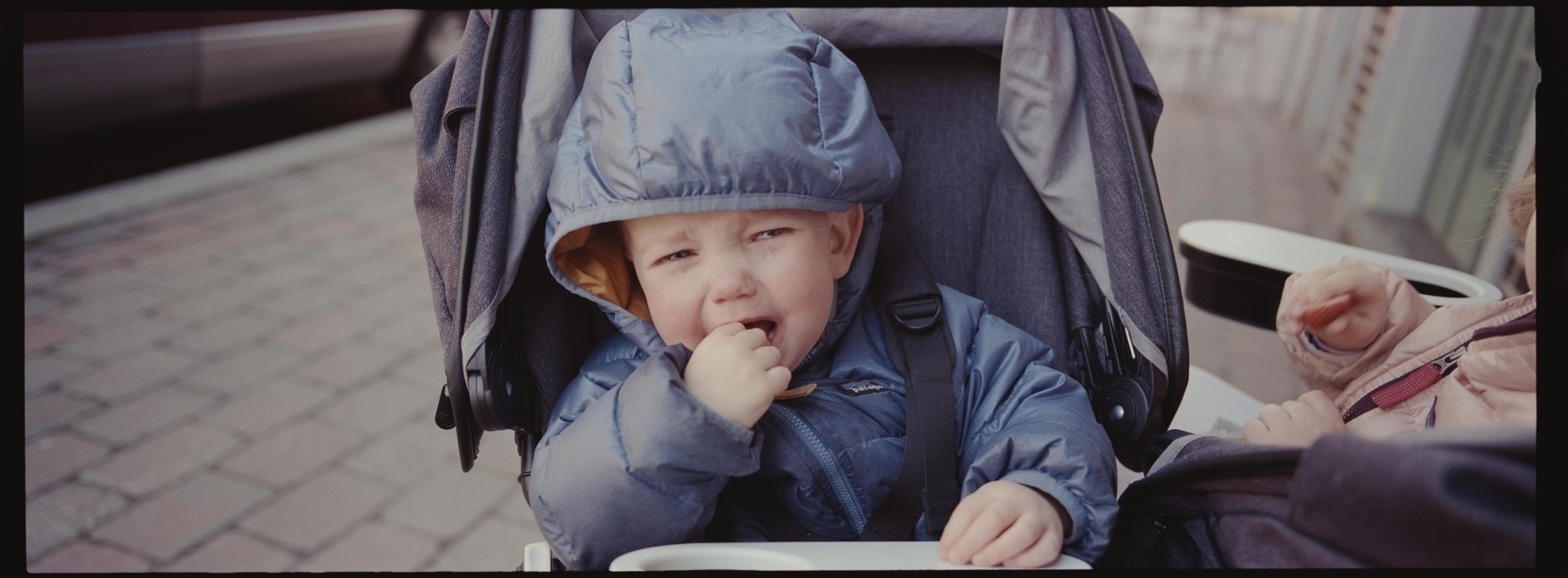
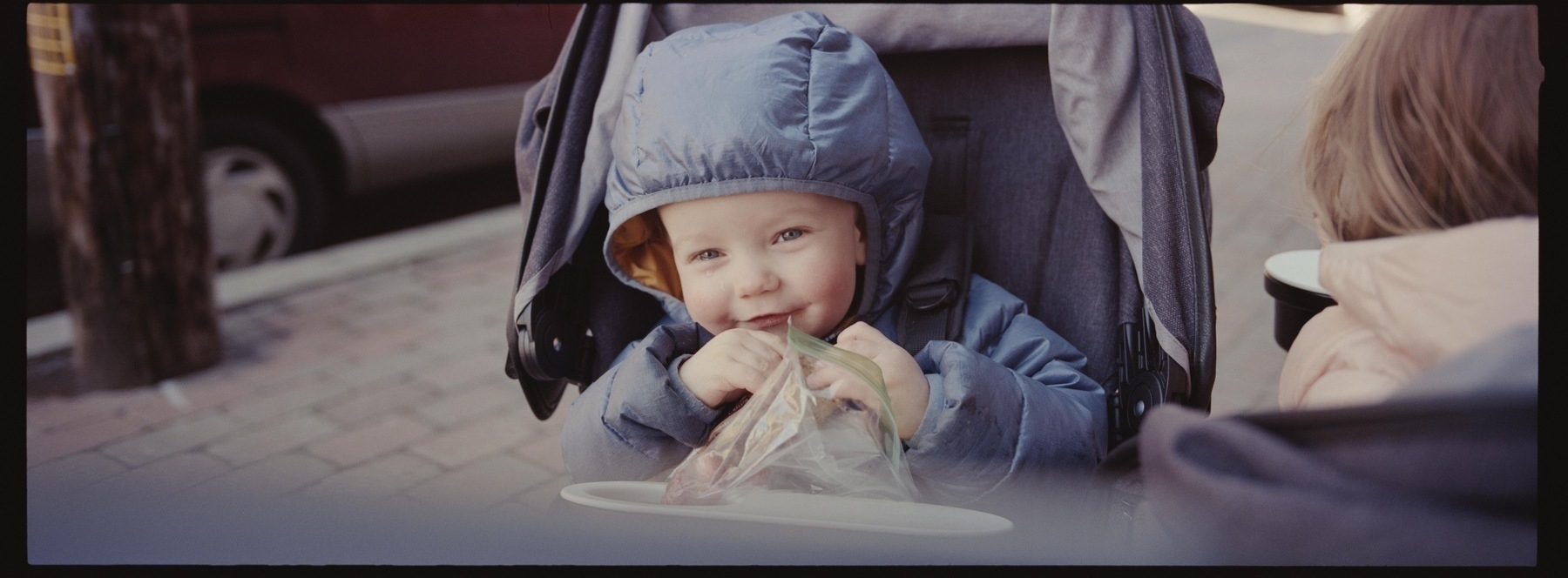
Pretty much every improvement in camera manufacture and editing software is designed to make our images look more like film… Just shoot film to begin with.
Here’s a film shot followed by the digital version with some editing. The digital setup cost 3x as much.

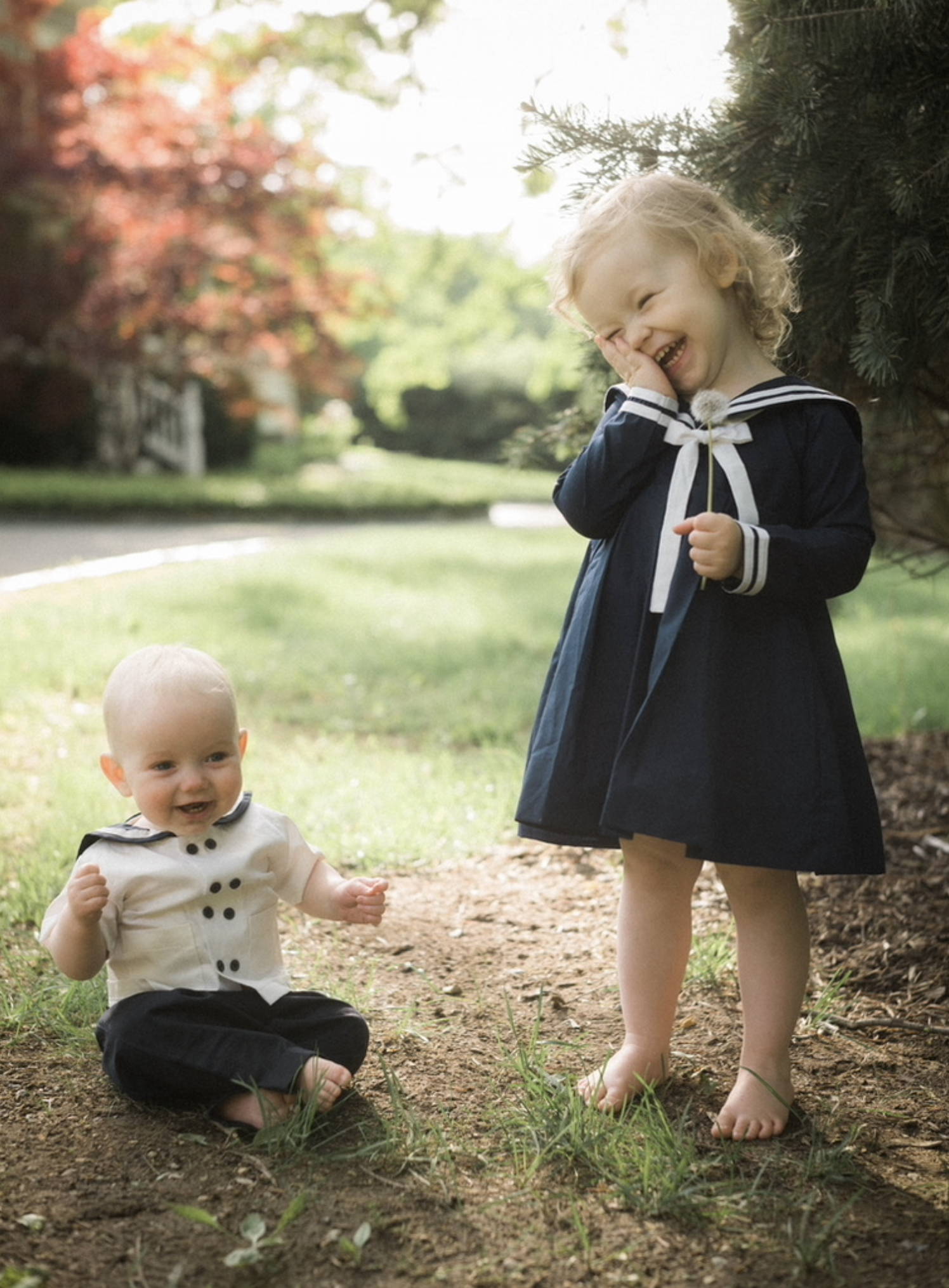
Yes, film photography is way cheaper. You can get an incredible camera a) with lenses, b) that’s already lasted 50 years and c) will last another 50, for less than $200.
The best bargain out there right now is the Olympus OM-1, by the way. It’s… amazing.
A “full-frame digital” equivalent (it won’t even be half as good) with lenses will start at $3,000 and will be broken or obsolete in less than 10 years, and I’m being being charitable.
Digital photography is a trap, and this is from a guy who owns a _lot_ of digital cameras (which have their place/uses, just not for maximizing the enjoyment of photography).
One of my favorite cameras is this little half-frame Olympus Pen from the 1950s that I got for less than $100. It’s got a beautiful lens, fits in a jacket pocket, takes 72 shots per roll, and like most of my film cameras, needs no battery.
Think about that for a second… how refreshing that is. This camera could sit in a drawer for 5 years, 10 years, and be pulled out and take a beautiful shot that very moment. Here are some grainy black-and-whites.

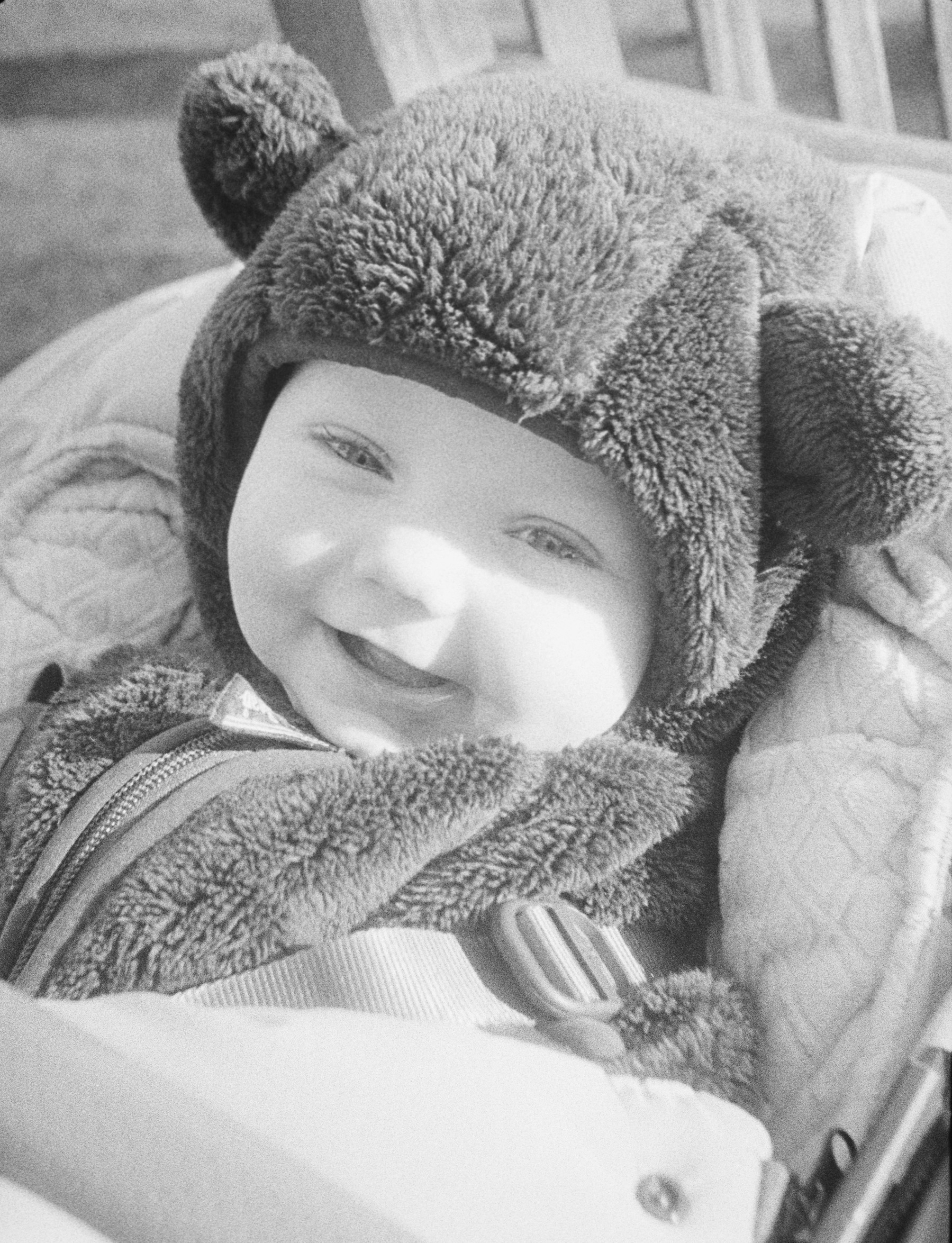

Here are a bunch of half-frame shots I took with the Pen in the winter before the world locked up. It didn’t take any time to clean up or color because it just looks nice. The Pen is in portrait mode by default, so you get these unintentional side-by-side mini-stories/diptychs.

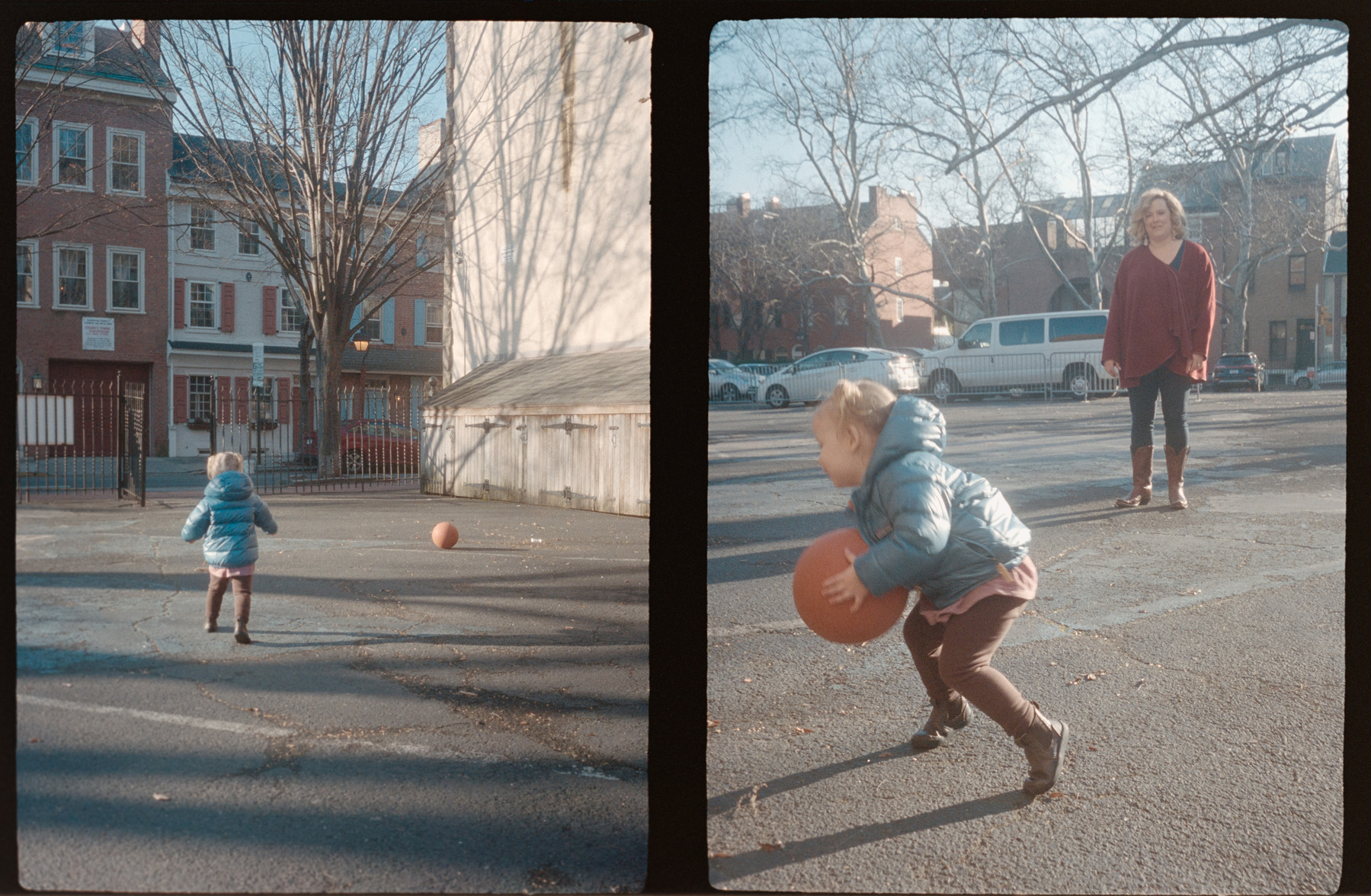
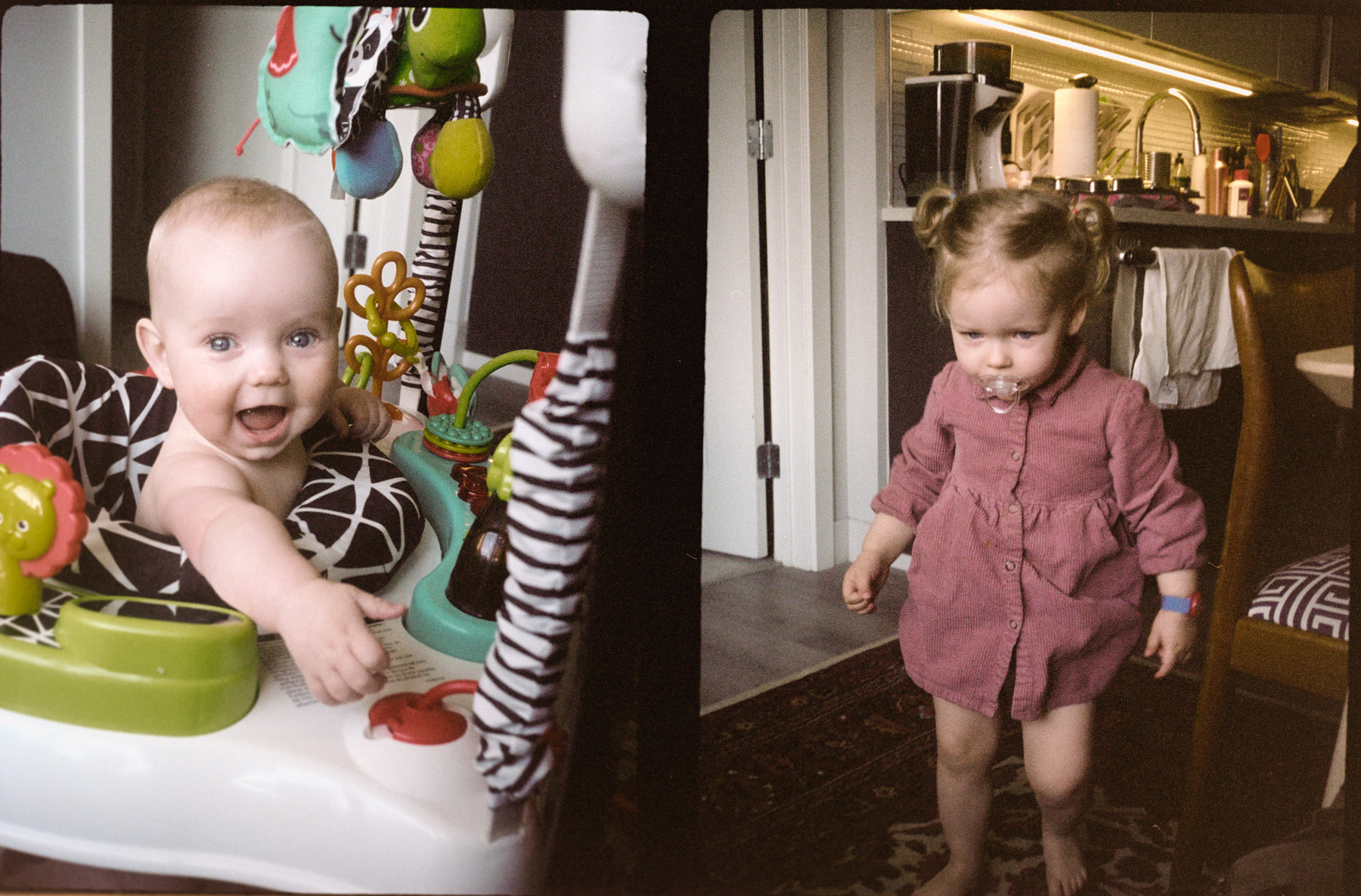
And with the Olympus Pen, I’m intentionally showing you the “lowest quality” film camera I have.
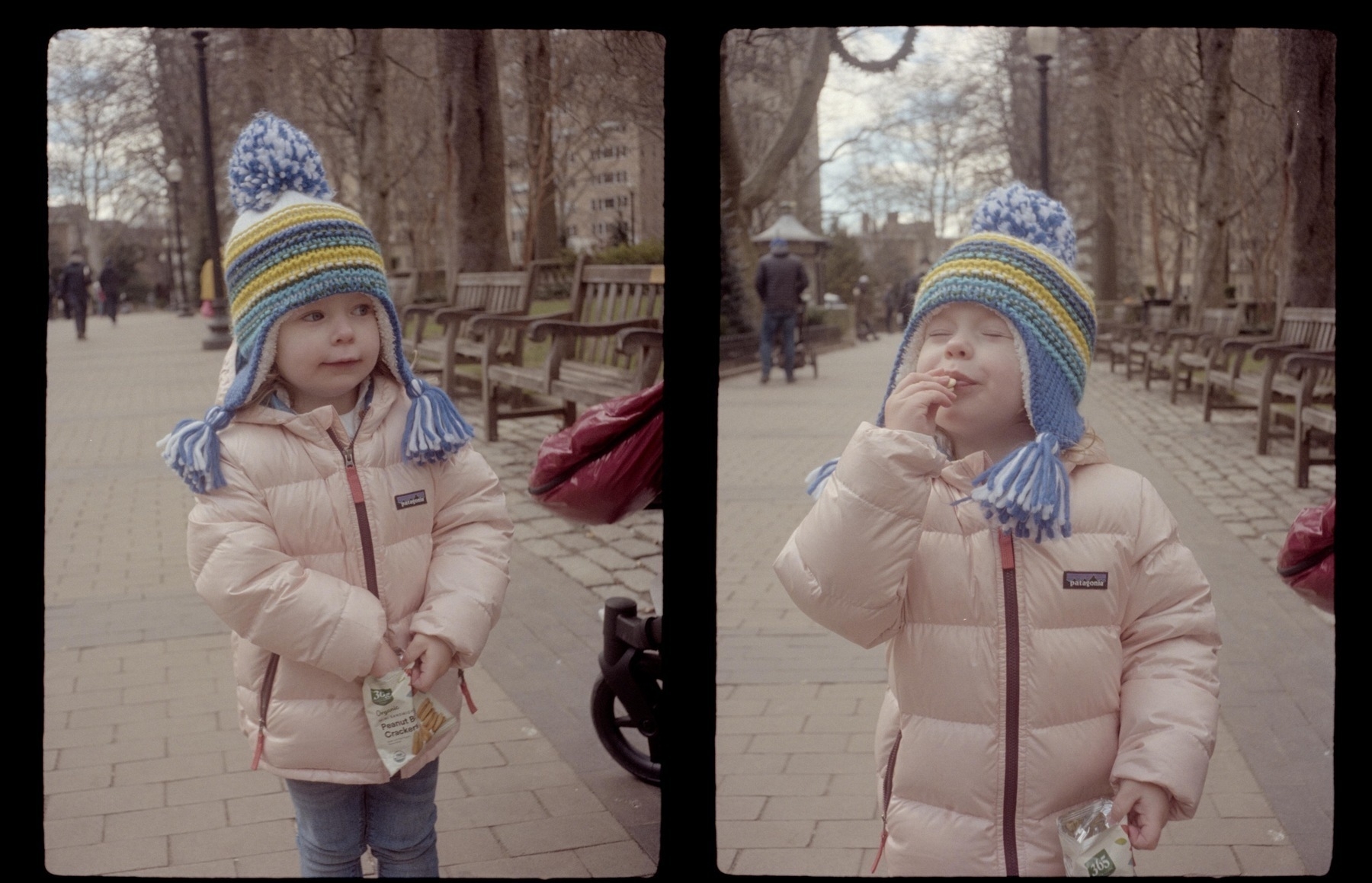
Film is the best quality and the least costly. Look, is it the most convenient thing in the world? Not usually. Is it the best tool for low light and sports and nature photography? No.
But it’s the most fun. And why are we doing any of this stuff anyway?
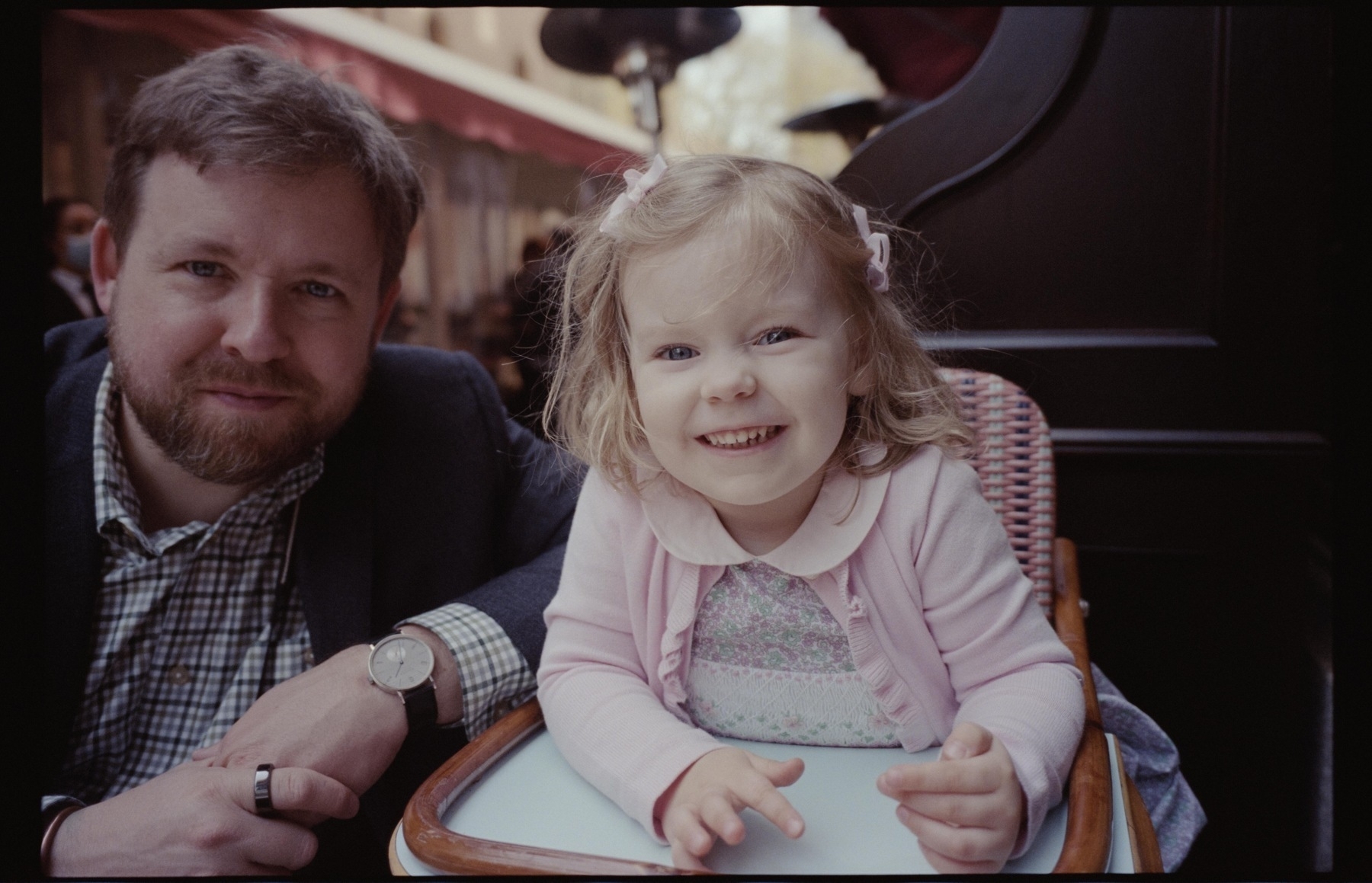
-
Globe and film processing capabilities have arrived.

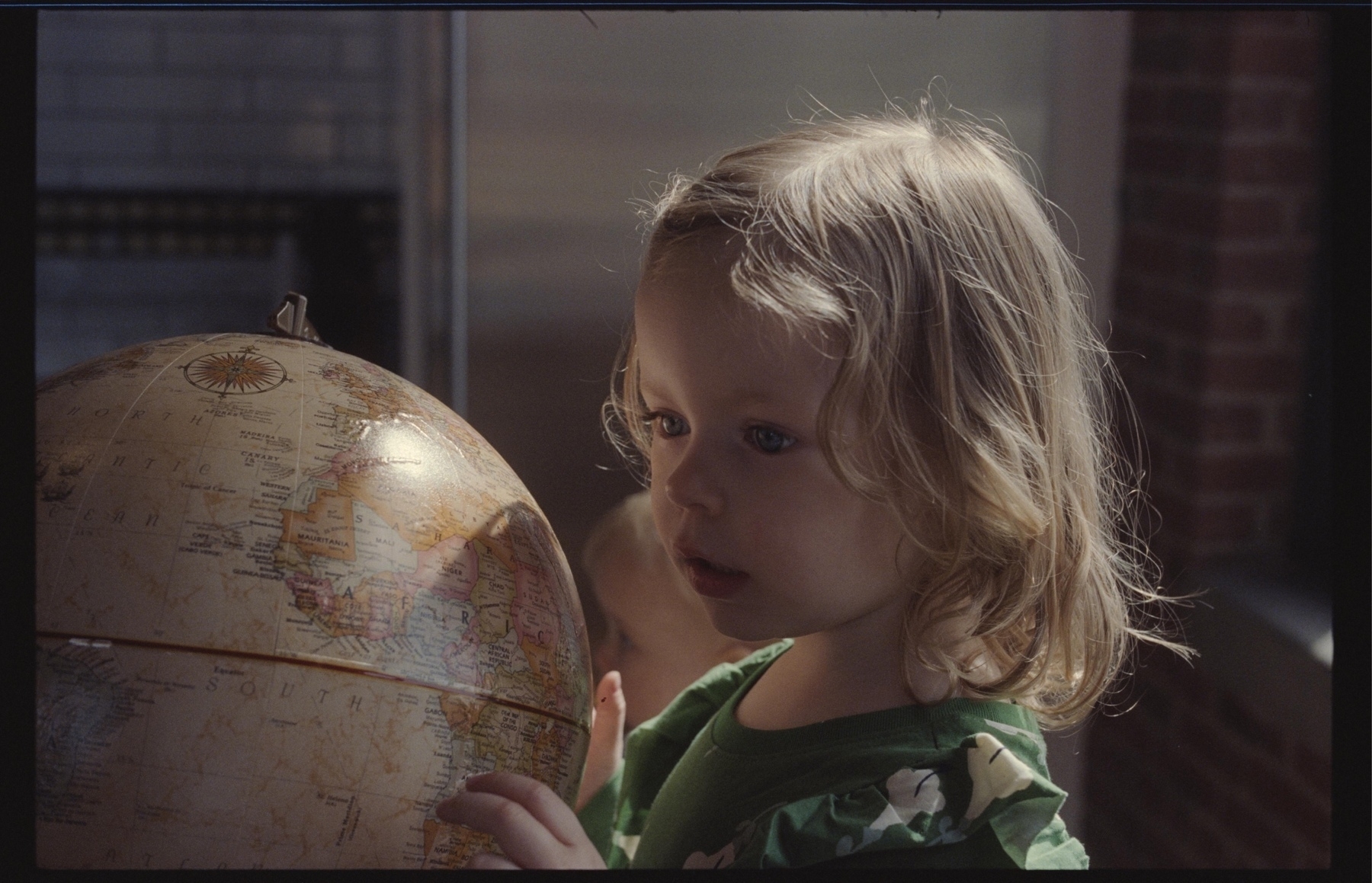
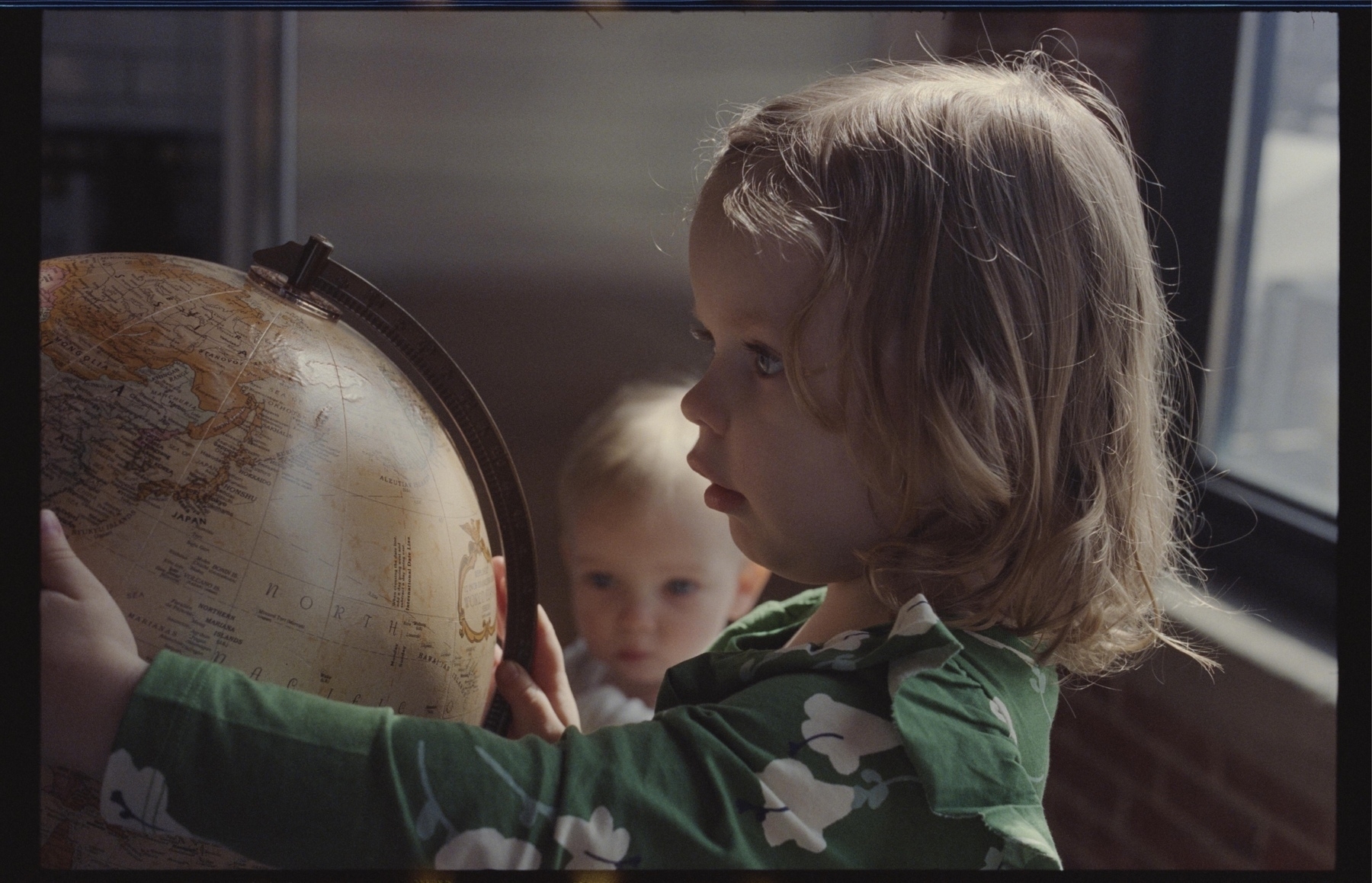
-
The Alarm Clock Fallacy
For years, I tried to use workflows, software (and people) to get me to do things that, for whatever reason, I wasn’t doing.
I thought they could act as an alarm clock for Important Work. I wasn’t wrong, but there’s something important I failed to notice about an alarm clock.
An alarm clock doesn’t help you get up. An alarm clock helps you get up at a specific time. Getting up is something the vast majority of people (and animals) already do.
Applying an alarm clock, a specific adjustment/enhancement, to something you aren’t doing, is broken.
Yes, this has been said to me in many different ways over the years (Just Do It), but my obsession with tools and ideas and optimizations and Thought Technologies™ always seduced me into believing that if I could just find a better workflow, I would do this stuff that eludes me.
See, I have experienced benefits from workflow obsession. As someone for whom mouse usage and email became obvious problems early in my career as a video editor/creative consultant, applying the alarm clock of GTD-ish concepts and keyboard shortcuts saved my ability to work.
But I was already editing video every day and responding to emails every day. These enhanced workflows improved everything I was already doing.
Then I tried to apply workflows to writing the screenplays I wasn’t writing. This quickly becomes a dark pattern.
To be charitable, even this mistaken way of going about work has led to good things. Some of the greatest tools ever were built by frustrated artists who convinced themselves the tools were the problem. And the tools were a problem, just not their problem.
In many cases, these toolmakers ultimately found their own joy and creative expression in creating these tools and contributing them to the world. I think that’s beautiful, even if it began in confused frustration.
One example from my life currently: For years, I’ve tried to get my todo list to help me do my creative work. Revealing to you how many iterations of this I’ve been through feels like an alcoholic admitting to a therapist how much he drinks.
Too many. We’ll leave it at that.
For the first time ever (really really actually this time), I’m turning to my (not over-engineered) todo list to help me with what I’m already doing creatively. It’s providing a little clarity and prompts for next actions. It’s behaving the way an alarm clock really behaves.
These threads/posts that I’m writing every day, if they serve no other purpose (they do), they are a foundation of writing activity that opens up a world of possibilities/directions/enhancements/workflows/whatever-I-feel-like. They are a baseline of creative flow.
If I’m not doing anything, there’s nothing to practice or improve.
Ultimately, I had to consider creative practice from the opposite angle: What is the simplest, easiest, most sustainable thing-I-could-call-creative that I can do RIGHT NOW?
Then alarm clocks from there.
For the record, once you marry/partner with a lark or have kids (I did both), an alarm clock isn’t really a thing anymore, but I digress.
-
I Love Storms
It just stormed really hard here in Philadelphia for like 5 minutes.
I love storms. Particularly when I feel like I can just be in them, experience them fully, from a place of relative safety.
There’s nothing like being in full snow gear in a massive snow storm, walking up a long hill in the woods. You can shout and your voice stops an arm’s length from you.
Or being in full raingear in a torrential downpour with a hundred lightning strikes per minute.
I’ve been in many storms at key moments in my life. The truth is tha they probably became key moments in my life because of the storms.
Like each of its component thunderclaps, a big storm is like a sudden explosion through the normal everyday experience of the air we breathe and walk around in.
It’s a cue to pay attention. You can’t help but pay attention.
You keep paying attention.
A bit softer, gentle rain falling while you sit on a porch. The smells. The fragrant mist that rises from the impact of each raindrop.
ofter still, just a brisk wind, cloudy, a couple of leaves blowing by.
We all need a storm once in a while to jog us back into awareness that we’re alive, to remind us of real danger, not the dangers we make up, and that even in that brilliant, chaotic danger, we are here.
May we all be safe, and well, and happy, and awake for every storm.
-
Losing a Mother at 5 Years Old
My mom died when I was 5 years old (33 years ago). I think I’m doing okay with it but it’s hard to know.
It’s a tricky age to have that happen.
The problem with 5 years old, I think (and I don’t know anything, for the record, I’m just making sense of my experience here), is that you’re old enough to understand your mom died but not really old enough to do anything with that.
In my case I just kind of turned off my emotion chip for a while (a couple decades?). Like sometimes it would fritz out and I’d fly into a rage, but I don’t remember feeling sad really. In my recollection I could count on one hand the number of times I cried.
This might be the best way to describe the dissociation: Today, when I hear that a child has lost a parent, I feel compassionate feelings about that tragedy (my emotion chip works now), but it does not occur to me that I share that child’s experience.
It’s the most bizarre thing: I’ll be thinking about how sad it is that a 45-year-old dropped dead leaving two little kids behind, but something will have to explicitly jog my memory for me to think “Oh… right… My mom died too… I have experience with this.”
The truth is that I don’t feel like I actually have experience with it.
I was too young—wait, that doesn’t make any sense—That’s the experience, the one we’re talking about, losing a parent when you’re young!
And by the way, ask anyone who knows me: I like to share my experience, maybe too much. Every exchange I have is comparing experiences, looking for similarities, verifying assumptions, etc.. It’s what I do.
But not with (probably) the most important event of my life.
The other issue I’ve had with losing my mom that young is, by the time I got around to “doing something with it” it was already so long ago. 5-year-old me just doesn’t have much to say about it.
I remember we had the memorial service on a weekday at the Unitarian church where my pre-school/kindergarten was in the basement. I wore a double-breasted navy blazer with brass buttons.
It was very important to me that my friends downstairs see me dressed up importantlike.
I have this one picture of my mom, who I don’t remember much. I was looking at it today and it stirred the emotions that led to this post. Now that I have kids it means a lot more to me, how devastated I would be to leave my kids (I mean, I’d be dead, but—you know what I mean).

The reason this picture makes me emotional now is that I wish I could let her know that I’m okay. Not to worry.
I feel I can relate much more to her experience than my own.
I’m happy to be able to write this down because it’s helped me to do so, and I’m happy to be able to share it in case there’s anyone else whose experience is like mine and, like me, they just haven’t heard others talk about it much
-
Capturing Fleeting Thoughts
“Capturing” is itself an illusion.
All expression in the embodied world is simply editing, pulling small snippets of the expansive whole and showing it back to itself.
There’s a desire to grab ahold of thoughts and experiences. To hold on to them forever, but they both cannot be held and are always being held. Just not by ME.
The very notion of ME is what’s separating my experience from the felt sense of being held in a field of all that is.
The word “capture” is perhaps itself the wrong orientation to taking fleeting notes, as though we somehow need to grab something or it will be lost forever.
This is an anxiety-producing way to think of writing notes.
I would rather consider that everything is always here, always with us, and it is in holding space to be present to it that the very parts that are needed automatically emerge, and we can pick and choose what to show to others in this embodied world.
It is all here. The sea from which all thought and all experience and every Thing emerges. There is nothing to hold on to. But there are infinite things to notice.
And we’re noticing them whether we want to or not. Trying or not trying. Nothing is lost.
A writing practice that allows for this openness and exploration and isn’t based on CAPTURING something “fleeting,” this is the gentle breath that kindles the fire of creativity.
-
Better Thinking Through Technology
I joined Beau Haan’s Roam Book Club because even though I read Söenke Ahrens’s book back in early 2019, the way I tried to implement a Zettelkasten was truly cockamamie and insane. I’m really enjoying Beau’s writing prompts so far. Today’s thread is from today’s prompt.
The problem with technology for augmenting thought is that it promises to make thought “better” without defining “better.”
Those of us who are intent on APPLYING ALL TECHNOLOGY skip this step: “Obviously the old way is dumb|inefficient|based on constraints that no longer apply.”
See, we get the new technology and how it works. We spend all of our attention on ways it can be used to “improve” on these dumb old ways. One of our favorite, most obvious improvements, is Efficiency.
“Efficiency is better than inefficiency” feels like a safe assumption, especially in a market-religious world, but it fails to consider that there are many areas where efficiency isn’t desirable.
One of these areas is in critical thinking.
While there are parts of thinking where it’s desirable to improve efficiency, such as finding or rediscovering desirable bits of old thinking without friction, the core function of critical thinking does not benefit from efficiency.
Applying an efficiency optimization to critical thinking is like applying a warming optimization to a refrigerator. The point is the cold.
The point of thinking is being present to the automatic, self-connecting ideas that arise from stillness.
Efficiency is not relevant.
These “improvements” aren’t always as perfectly offbase. Another Refrigerator Disruptor™ might optimize for seeing what’s inside the refrigerator without needing to open it.
“Why are we still manually opening our refrigerators like animals?”
He begins sawing holes in the refrigerator.
He realizes that this lets warm air rush in, destroying the refrigerator’s food-preserving capabilities.
He pivots to transparent glass refrigerator doors. Nailed it…
Customers universally hate his refrigerator design, which primarily promotes anxiety and disgust.
Refrigerator Disruption Man™ is baffled because he has clearly solved a problem.
He started with the fact that people want to know what’s in their refrigerators. Their desire is obvious based on their behavior of opening the refrigerator door so many times every day. Conclusion: There’s inefficiency in manually opening a door just to check what’s inside.
It never occurred to Refrigerator Disruption Man™ that a core, not-often-acknowledged feature of the refrigerator is that it hides away your unsightly and disorganized food, allowing your chaotically stocked kitchen to present as calm and sterile.
It never occurs to many who are trying to create thought-augmenting technology that slow, random, open, quiet stillness, the opposite of traditional notions of Technological Efficiency, is the key feature of critical thinking to optimize for, not a bug to fix.
-
Blackmagic Design Brand Photography
Blackmagic Design is a company that I’ve always made fun of, usually unfairly. They’re, frankly, amazing, and they’ve made incredible cameras and color science and color grading tools available at price points that are insane.
But their brand photography though…


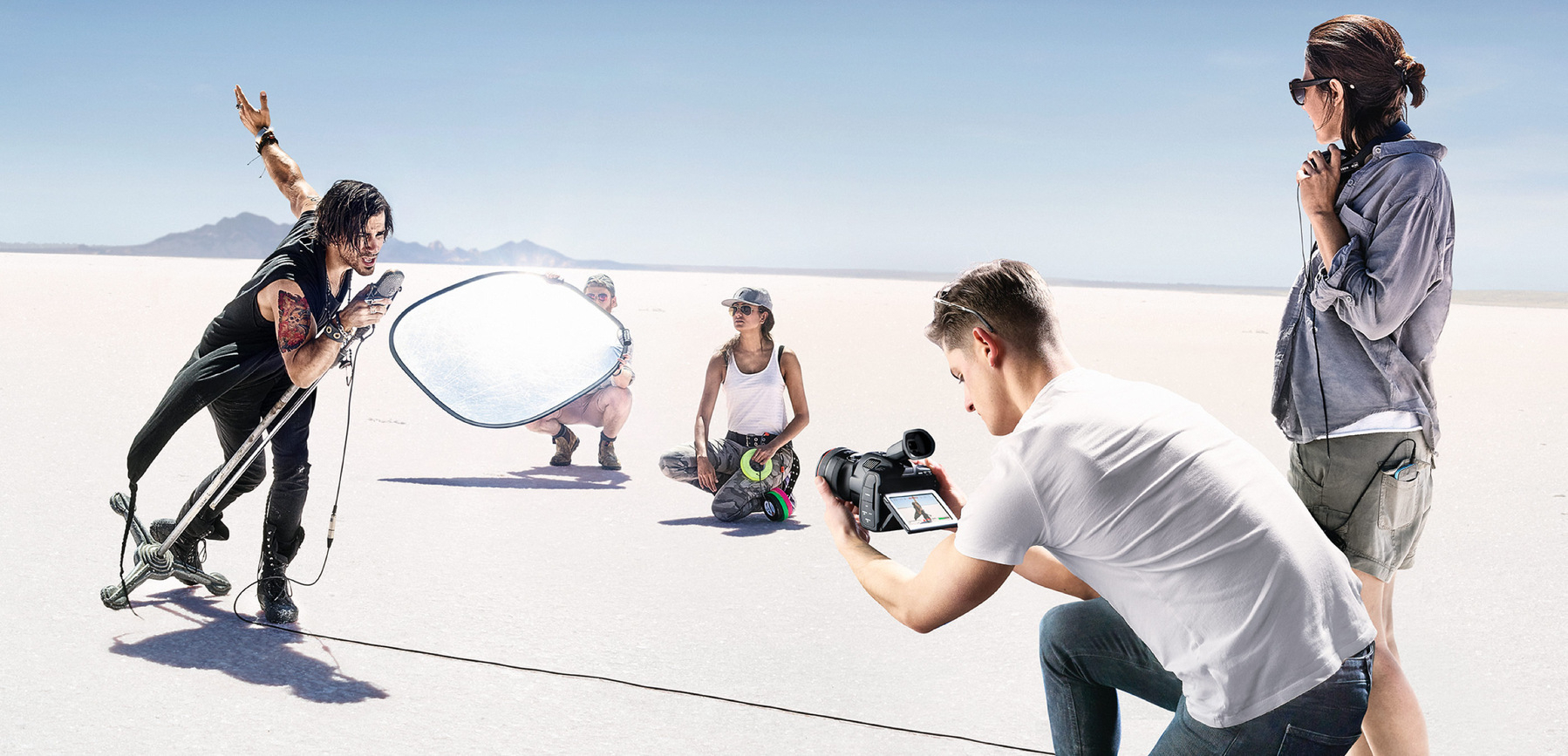

Blackmagic has done more to democratize filmmaking than maybe any other company ever. I love them. The OG Pocket Cinema Camera (the only one that should ever have been called “pocket”) will always be one of my favorite cameras ever.
But their brand photography is hilarious.

Everything that Blackmagic makes is decidedly good and the prices are great.
But the brand photography is usually beautiful people using Blackmagic products in ways that no one would ever use them, and these beautiful people are SO COMFORTABLE.
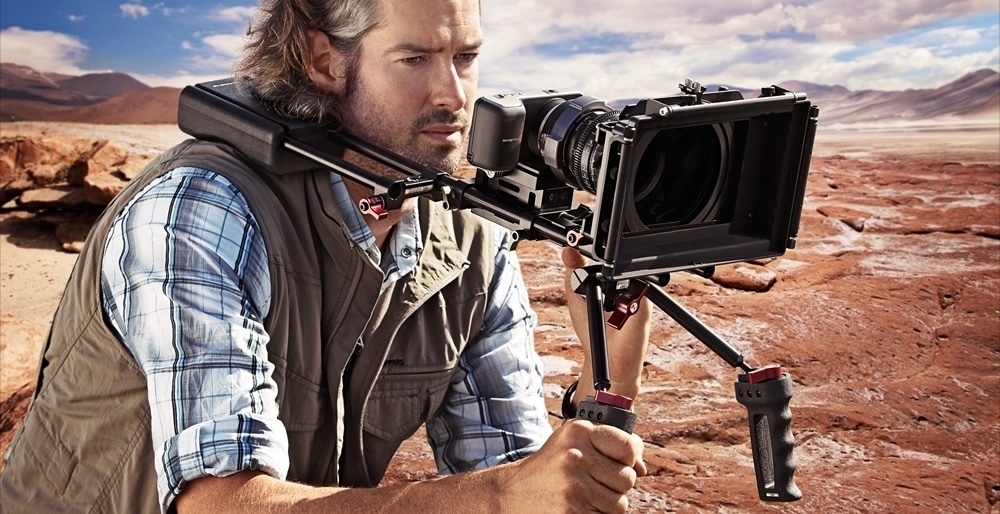
Look how comfy this camera op is. He’s apparently on a volcanic island surrounded by komodo dragons and his flannel shirt is Downie fresh. This man is so clean.

But you want to talk about clean. Just look at this immaculate broadcast desk. Look how comfortable this person is, and the lighting. It’s really relatable. You can really imagine yourself using this beautiful gear. All of this photography is art directed by Patrick Bateman.
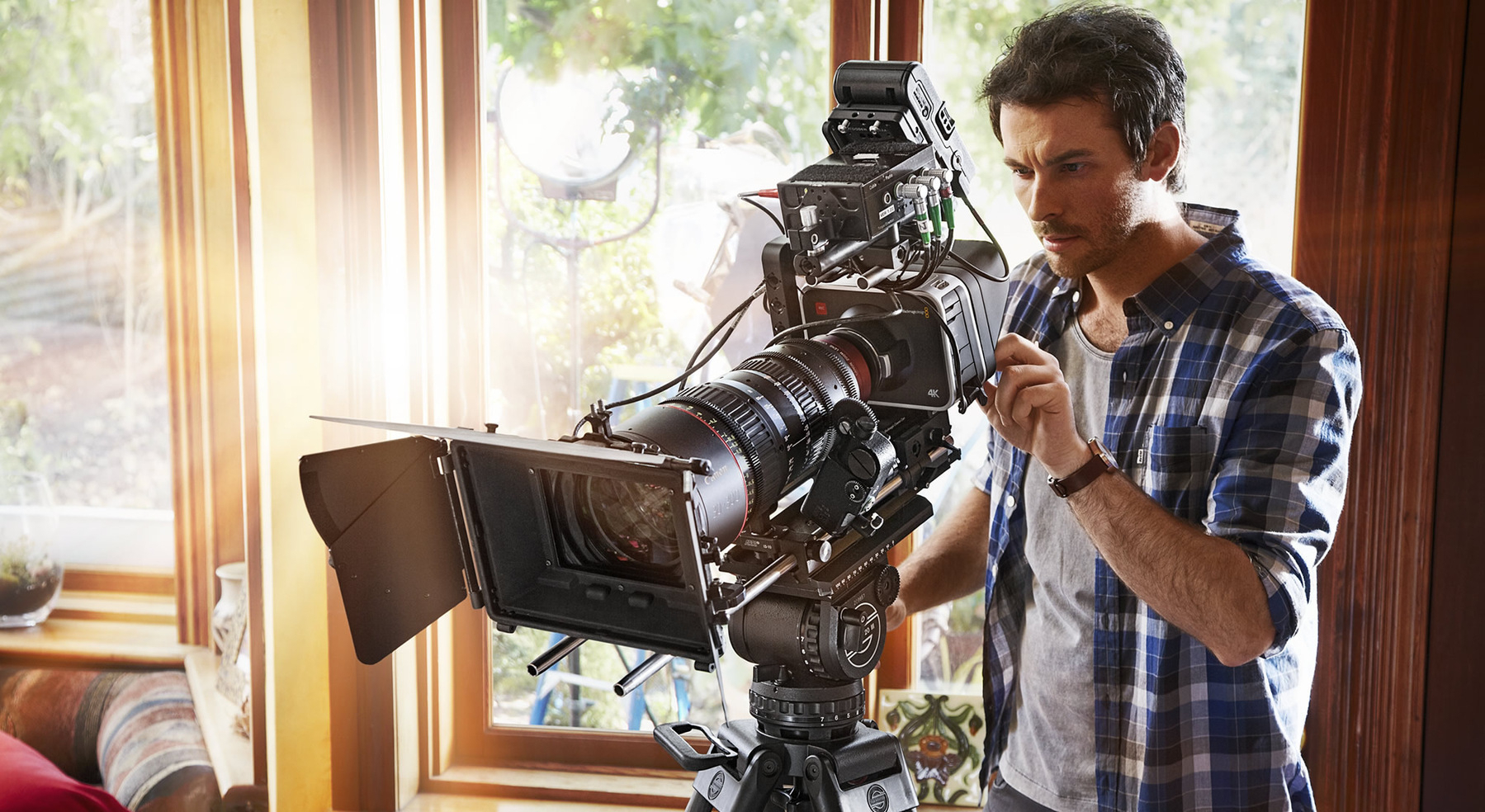
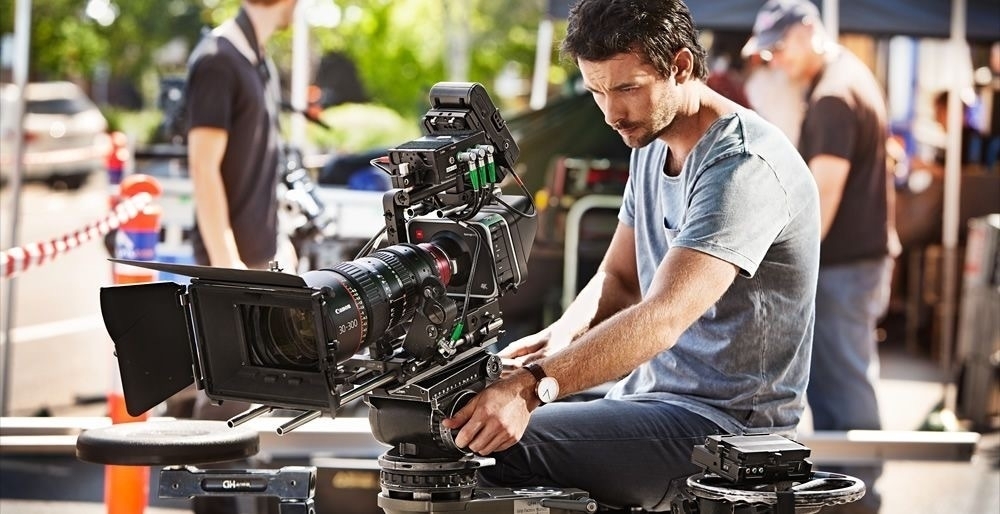
There has never been a colorist who looked this good while color grading, or who was ever in a room less conducive to color grading.

Lastly, my personal favorite: The Cintel motion picture film scanner. This is one of the most niche devices on earth. I’m one of eleven people in the world who wants one. It’s for SCANNING MOVIE FILM. It costs $30,000. Look at this Bond villain who has it mounted in her foyer.
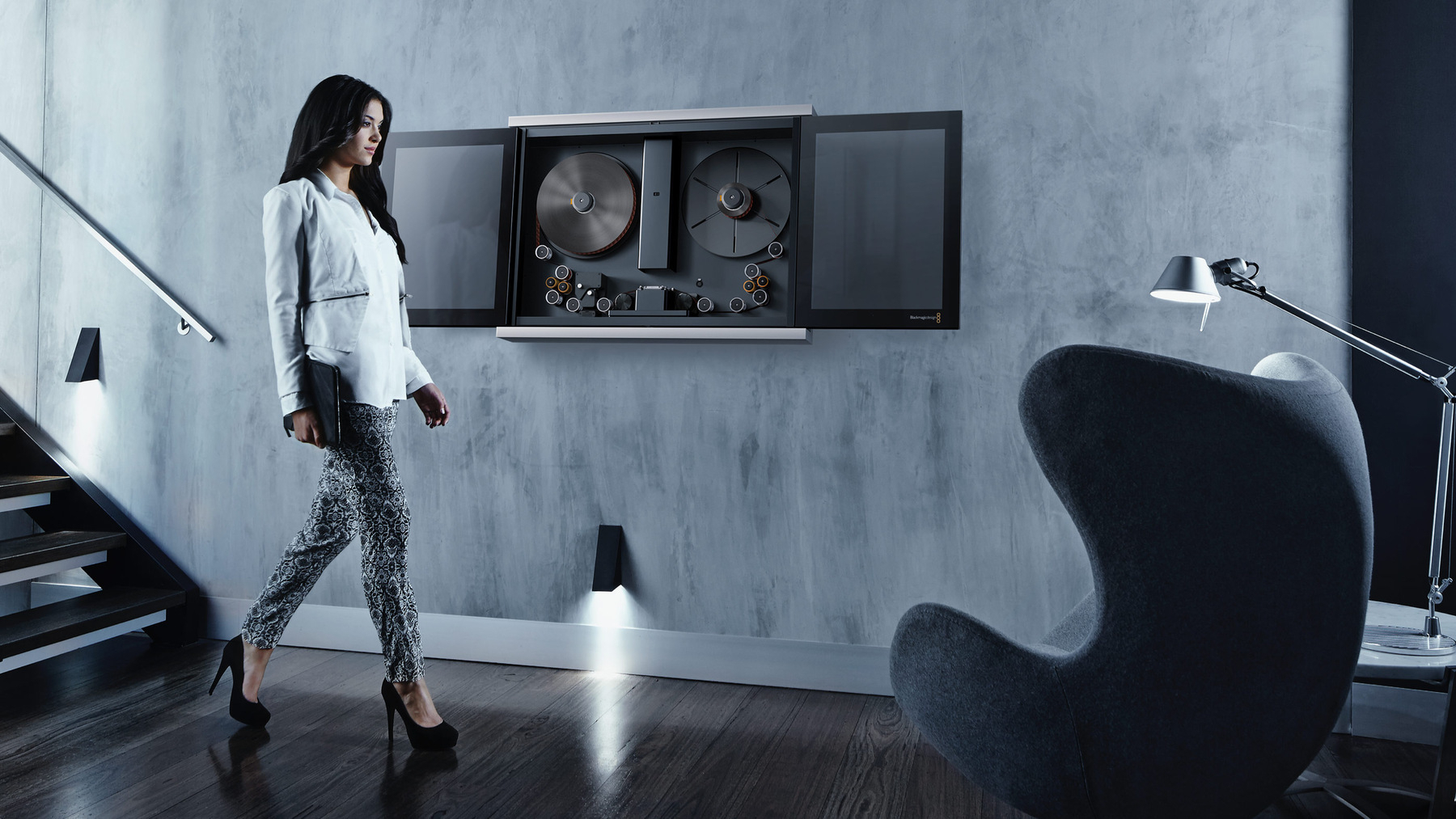
Apparently the Cintel motion picture film scanner is very popular with Bond villains. This one keeps his under the stairs in his billion dollar torture bunker.

Look, someone made these images, and the truth is they are beautiful, and we all keep clicking the Buy Button, so they’re doing their jobs perfectly. Beautiful renderings of great products composited on gorgeous 3D sets.
And the hair. ALL of the hair. It’s perfect.

-
Over and Over and Over
Watching Raya and the Last Dragon for the 146th time since it came out a month ago. This is how my 3-year-old watches movies. Over and over again, until she’s memorized every line, crying/cheering/asking the same questions at the same parts.
She’s play-rehearsing the story.
Mirroring, copying, acting out, practicing, this is what we naturally do. As far as I can tell, it’s what all animals do. It’s even what cells and genes do. They just copy each other, over and over again, and through that copying and combining, little bits of new things emerge.
ME
Let’s read a new book.
LOUISA
Nooo, I want to read this book again.
ME
But we’ve read that book so many times, you should—
LOUISA
Daddy, I don’t want a new book. THIS book.
Confession: When I’m winding down at the end of the day, avoiding going to sleep even though I should (getting some me time), I often find myself watching a YouTube video for not the first time. I convinced myself at some point this YouTube video was productive, but… again?
I love how little I drive now, but when I used to drive places, I would play the same song over and over, loudly, and sing along, squeezing every nuance out of every part of the mix. I felt shame about this. I even brought it up in therapy.
“Am I foolishly acting out fantasies?”
Is Louisa foolishly dancing to the end credits of her favorite movie of the moment? No way. She’s playing. And we could all stand to play more.
A lot more.
This is how the human being do.
By the way, _Raya_’s a pretty good movie, but the baby’s voice bothers me. That baby’s voice was a mistake.
The baby character is fine. I don’t like her voice. The voice is no good.
-
No Reasons
How can you make it so that everything you do is for no reason at all? In my case, I’ve needed to lose trust that reasons help. I’ve needed to become suspicious of reasons in general.
It seems like having reasons to do a thing should help motivate you to do it. This assumption sure seems reasonable.
But what if it’s the opposite? What if reasons apply pressure which creates unnatural resistance to the thing which you would already naturally do for no reason?
Ask a child why they’re building a tower or moving on from the current crayon to choose another color. They’ll just look at you funny or mumble something incoherent.
The real answer is something like “…..because fuck you, that’s why, stop asking dumb questions.”
Studies have shown over and over again that if you take a kid who naturally doodles and draws pictures and then institute a “reward” (reason) for their drawing, they will draw less.
Yet we try to motivate ourselves with reasons.
The truth is that there’s no real reason to do almost anything. When we transform our self-orientation to boss/worker or drill-sergeant/cadet, reasons emerge as just another tool to coerce ourselves to do things. To BE BETTER.
When reasons emerge for why I should do something, the most effective strategy I’ve found is to notice them. There they are. Like clockwork. These reasons think they’re very important and interesting. They think they can help me.
They are boring and useless.
DRILL SERGEANT Okay, time to do that thing. You really should do this thing because—
CHILD Because fuck you, that’s why. Gimme that plastic vegetable. I’m gonna put it in this pot. I’m not playing with you right now.
-
I Love to Argue
It turns out, some people don’t like argument. Worse than that: Argument makes them feel attacked. 🤯
Debate might be my favorite thing: for understanding, for fulfillment, or just for fun. It took until my thirties for me to learn there are many who don’t like it at all.
Of all the things I’m not proud to have taken so long to learn, this might be the worst.
All the times I was puzzled when someone shrunk away or changed the subject or simply avoided disagreement with me altogether… It never occurred to me that they might not enjoy arguing.
I thought maybe they weren’t as committed to their positions or not as quick with their rebuttals but… how could you not enjoy arguing? That’s like not enjoying winning. Or something.
To make matters worse, many of these people who don’t like argument have been those closest to me.
In recent years I’ve begun to learn to tone it down, but I would say I still have a ways to go.
I really would never want to make anyone feel attacked. Particularly not when I’m just having fun.
This kind of disconnect makes me wonder what other sources of strife in the world are simply people not being able to conceive of how different their personalities might be.
-
The Failure of AOL Instant Messenger
I don’t want to represent that I have a comprehensive understanding of the history of business, but I can say that in my lifetime, the single greatest corporate failure was America Online not following AOL Instant Messenger to its obvious conclusion.
AIM was the place where an entire generation, the first generation of Digital Natives™ (with experience of the prior world of rotary payphones), connected with one another online, and AOL got nothing from it. The failure is truly astounding.
AIM was where all kids lucky enough to have computers lived, particularly during those awkward sit-on-the-phone-for-hours-sometimes-in-silence-with-boys/girls years. AIM let us conduct multiple conversations with boys/girls simultaneously.
So addicted were most of us to AOL Instant Messenger that, when there was no one around, we would look at each other’s AWAY MESSAGES. These could be styled in different colors.
An entire generation of, the FIRST generation, of web citizens, spent hours curating AWAY MESSAGES.
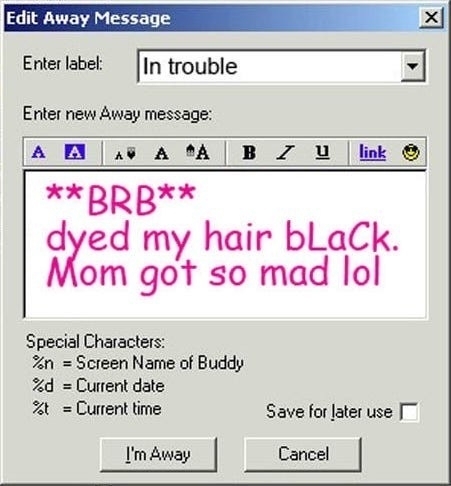
All these kids were screaming, in bRiGht, cOlorFUL, aLteRnATe CAPS, for a Facebook timeline, for a place to post. AOL had them all!
It’s no wonder they became the first company to fail at trying to own the Internet.
To run AOL Instant Messenger the way it ran in the late 90s is leaving a trillion dollars (actual approximate number) in cash sitting in your car (and not even locking the door because you don’t want to have to fish the key out, yes we unlocked car doors with a key back then).
You can tell me if you think you’ve seen a bigger, more obvious miss. A more catastrophic result of business incompetence. A more spectacular wildfire of hundred dollar bills just from pure negligent oblivion.
I have never seen one. AOL’s failure is truly astonishing.
-
This Version of Capitalism Is Terrible Game Design
Every time I bring this point up to economically-minded friends, they respond with some version of “alas, this is just how math works 🤷♂️.” The version of the Capitalism Game we’re playing right now is designed terribly. This is how the levels work, roughly:
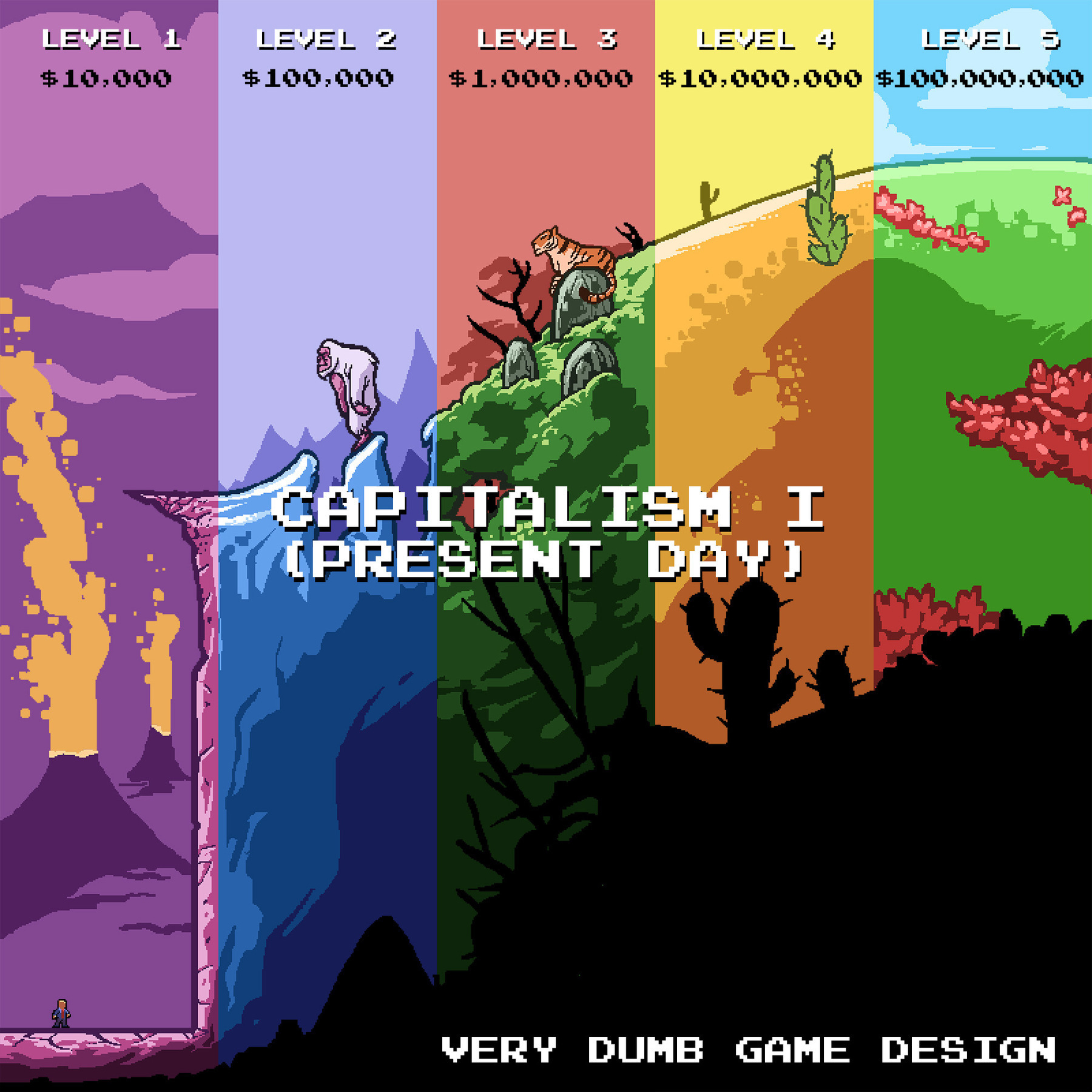
There is no good game that is designed like this. The first level is supposed to be easy, then the next level is supposed to be a little harder, and then a little harder, and then it should become very hard. We’ve set up the rules of Capitalism Game I exactly opposite this.
And to make the design even dumber/more tragic, the “points” in this game translate to actual alleviation of suffering but only in the first few levels. The points amassed beyond that are the equivalent of confetti explosions that don’t even benefit the people who win them 🤦♂️.
And the curve just continues to get flatter. If we’re honest, it ends up going downhill. Once you get to a certain level, the game just starts giving you money. Is there any wonder why people hate this game? What child would play a game where you start at the hardest level?
This is how the Capitalism Game is supposed to work:
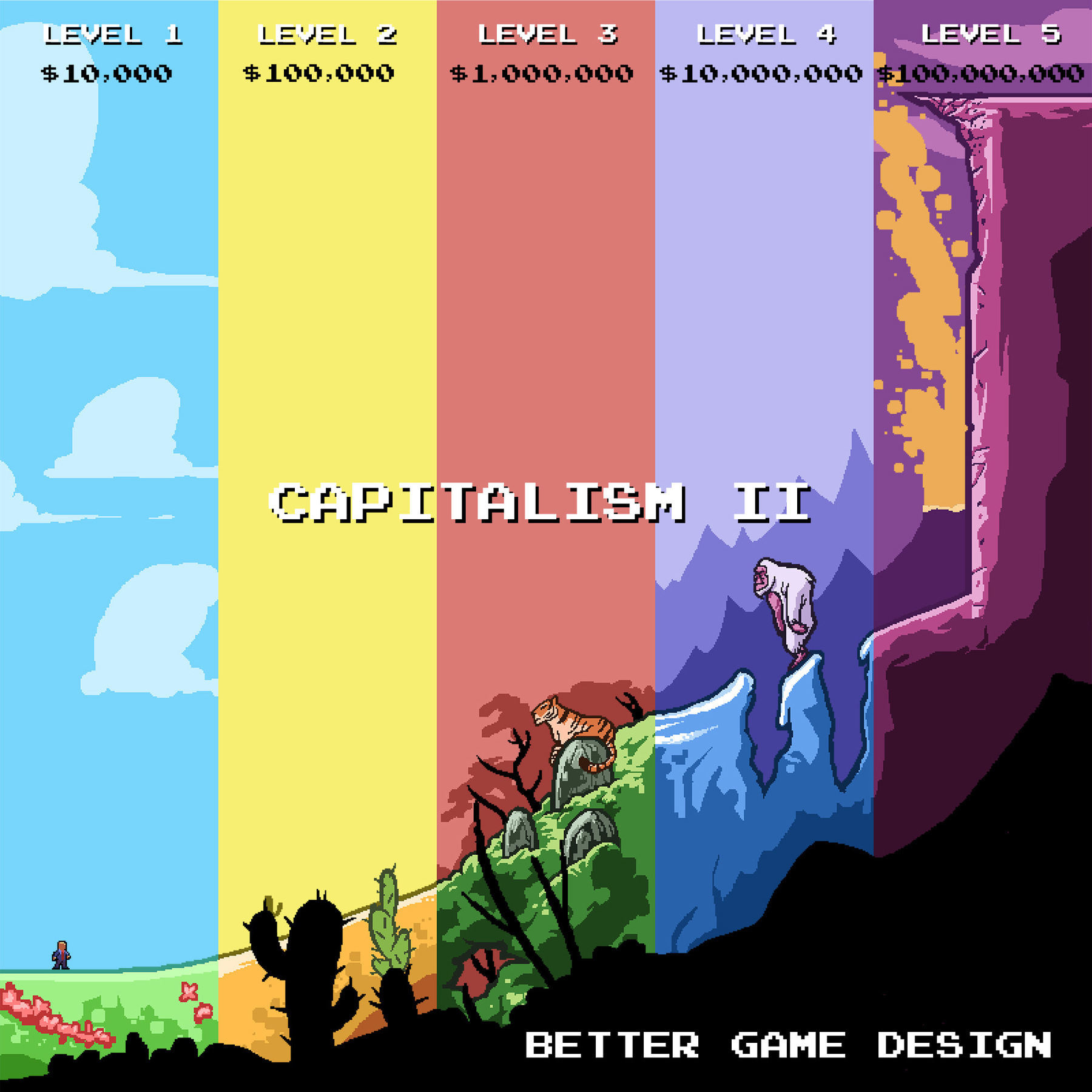
This is how you design a more fun and humane game. This is a game that would make sense to a human child (it even makes sense to other mammals, in fact).
“So, errrm, the compounding nature of—” use your imagination! “Actually, errrm, the incentive to invest—” maybe take like eight seconds to think of new ideas while people everywhere lose faith in every institution. “Well, errrm, punishing success—” USE YOUR FUCKING IMAGINATION.
-
Hardware Is Good, Now It's Software's Turn
It’s one of the three annual Apple holidays tomorrow. Holidays I used to celebrate.
I used to stand in line each year for the new iPhone, and my career has proven over and over again that my fanaticism was 100% justified. Apple products have paid huge dividends for me.
They are the tools I’ve used to create just about everything I’ve ever traded for money. The improvements year over year were reliably excellent and I credit the amazing ecosystem of software developers on iOS for any design thinking (and most of the skills) I have.
I’ve been fascinated by creative tools of all kinds for my entire life and software is particularly exciting: Someone can make a tool that allows an entirely new means of creation. That tool can then be distributed to anyone else in the world, at scale, and virtually for free.
The person building one of these tools, like an Excel or a JavaScript web framework or @RoamResearch, are 100% equivalent to the first human to figure out how to use a hammer and nail. Here’s the thing: The world of software tools is still in its terribly awkward adolescence.
Software is somewhere in the summer between sixth and seventh grade, with braces and the start of some bad acne… It’s a real mess, but with so much potential.
The current class of hardware, however, is pretty mature. Consider the last time you’ve thought the following?
“Man… This phone is slow.
“I wish my screens had higher resolution or better color fidelity.”
“This camera sucks.”
I bet it’s been a while.
There’s a good reason for this: Microprocessors have reached a totally acceptable speed for our brains and fingers to be able to accomplish most of the tasks we need to do. There hasn’t been a noticeable difference in iPhone performance for 99.9% of people since the iPhone X.
While this portends bad things for Apple’s annual-upgrade business plan of the past 13 years, this is a moment for celebration. In terms of hardware, this is it. We made it. We’re here. Our TVs, screens, camera sensors, and microprocessors are… great.
Digital camera sensors have mostly caught up to film (though film is still better/more fun/cheaper/friendlier for the environment/economy), TVs are high resolution (you’ll never need to throw out another DVD collection), phones are fast… Hell, even the Internet is pretty fast.
What’s NEXT? Augmented reality glasses? Plugging computers right into our brains? Hold up, nerds: We aren’t even using good tools/abilities/ecosystems for the devices we have yet. We have the tools, but the functional equivalent of zero people are using them.
You think we’ll be able to make good and useful things for AR glasses? Things that will make an impact like multitouch screens in 2007 or the mouse in 1984?
Look around.
People are mostly scrolling Facebook and Instagram right now. We haven’t done _shit_ with what we have yet.
The next wave of Big Software will be tools that actually benefit people’s lives, not “platforms” that exploit their animal weaknesses. The end of the race to the bottom is nigh. There’s nothing holding us back. We have everything we need, and it’s all pretty good.
-
Knob Feel
I’m asked this once a week: “Which microphone|camera|lens|mixer|etc. should I buy?” This always requires a conversation (which I do love to have).
Most of the time, there’s an option that’s 90% as “good” as the 10x-as-costly option, but the expensive one has great knob feel.
Most people don’t really have a choice here. They need to get in as unspendily as possible and even the “cheap” option represents a big investment. But if budget is available, the choice is not as simple as it would seem.
Knob feel matters. A lot.
The difference between a sound file that comes out of a cheap mixer/recorder and a Sound Devices mixer/recorder is like the difference between a filet mignon from Outback and a same-source filet mignon from Ruth’s Chris. Ruth’s Chris will be better, but they’re both filets.
The difference between the feel of using a cheap mixer/recorder and the feel of using a Sound Devices mixer/recorder is the difference between eating an Amtrak-microwave hamburger and a 12-course meal prepared by a Michelin-starred chef.
By the way, I’m mentioning Sound Devices here because they are one of the OG grandmasters of knob feel, but I do have to mention that the legendary Sound Devices knob feel is absent from their MixPre series (which are totally fine, I have one, but that ain’t knob feel, folks).
You can try to convince yourself that you don’t care about the feel of using a tool, but that isn’t true. The creative process is complex and psychologically messy. Sensations, emotions, and friction that come from using creative tools always affect the process and the output.
The good news is that if the only thing that matters to you is output sound/image quality, audio/video prices have never been lower, and quality is pretty much maxed out.
The better news is that, in many cases (I can tell you which ones), investing in tools with knob feel is less costly in the long run than investing in tools with cheap plasticky knobs.
This is my Leica M3. It was manufactured in the 1960s. I could sell it right now to a happy buyer for $2,000 or my great-great-granddaughter can just use it for her entire life and then leave it for her great-great-granddaughter. And the knobs, by God, these knobs…

You’ll always have to pay up front for knob feel.
True knob feel cannot be mass-produced or outsourced. Knob feel requires attention and care. There’s no recurring revenue to attract investment in knob feel.
Many product categories may have experienced their last great knobs…
-
Fake Company Logos
One thing that’s been fun in the creation of these first Markee videos is making up five fake companies. I’ve always loved naming things. I love it. Well, we had five characters for whom we needed to come up with five companies.
Together with our amazing designer Euge (who is taking some much needed vacation for the next two weeks), these are the five characters I came up with and their fake company names and logos (we had to knock these out in a day).
First, there’s Valeria Gutierrez, a sales team lead for a big multinational corporation.

Next, there’s Charlie Larkin, a creative consultant with a small design/content marketing agency.

Then, Lara, an operations manager for a big tech company.

Mona, the director of a non-profit theatre company.

Lastly, there’s Newton, a customer support director. The funny thing with Newton is that he’s actually Markee’s customer support director and he’s actually an extremely talented actor (and he served as casting director for these videos). This logo is my personal favorite.

We loved the Toasty concept and logo so much that we made a hoodie out of it (thanks to Kim for the iron-on graphic magic).
Are these the best fake company names and logos ever created? No. Do I love them as if they were? Yes. From this point forward, whenever you hear the word “Toasty,” your mind just might say… “We got you.” Thanks for that, Eu.
-
High Street Hoagie Packaging
I really love when extra attention to detail has been put into something where no one asked for it. This is a hoagie I bought from High St. Philly yesterday. This packaging is delightful.
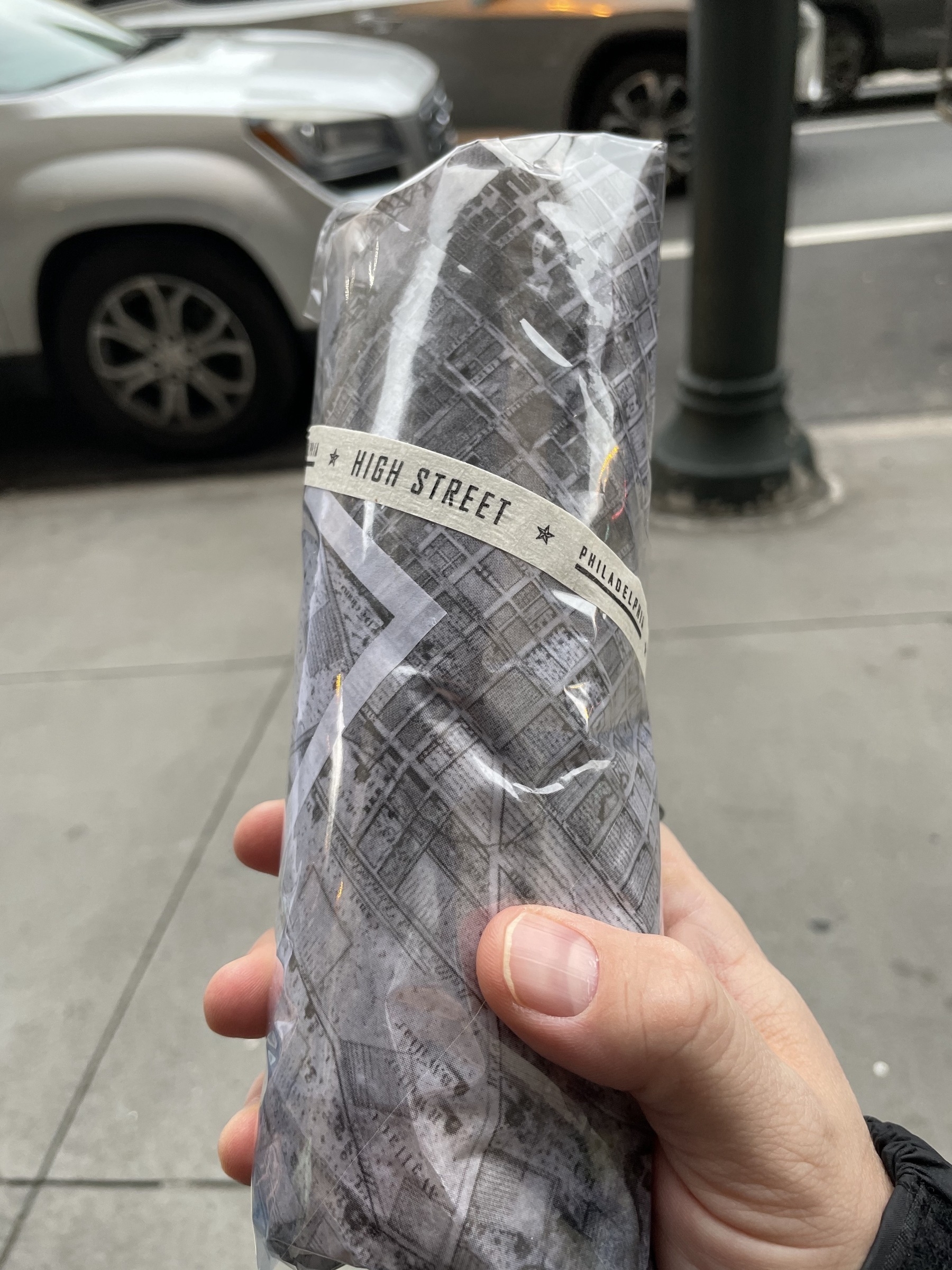
Yes, that’s custom-printed masking tape holding closed a double-layered wrapper. The inner layer of the wrapper is deli paper with an oldschool (presumably Philly) street map printed on it. The outer layer is clear plastic, holding in all that traditional Italian hoagie goodness.

Here’s the thing: This is really beautiful, thoughtful, and elaborate packaging for a hoagie, but really the most important adjective of those three for me is the middle one: it’s thoughtful.
Being thoughtful lets customers know you care about what you’re doing.
High Street also happens to make some of the best breads in the city and we always have a couple of loaves sliced up and frozen for toastmaking (we love toasts). But I think you could probably already tell that from the way they wrap their hoagies.
By the way, the hoagie was good, the bread was better, and the buttermilk fried chicken sandwich was Top 10 best sandwiches I’ve ever experienced in my life, without question.
Good packaging/thoughtful details will always get a hat tip from me.
-
Creative Attention in Production
I’m on a real film set today for the first time in quite a while. Two years ago, I transitioned to a more businessy role at my production house. I’m still involved in the creative process, but I’m pretty much out of the execution part.
This is as it should be.
I love the film medium and I love the shooting process. I love the collaboration, the melding together of so many different art forms. Part of me even loves the pressure. Unfortunately, most of the pressure comes from the overwhelming cost of the process.
For most crew on a production, the jokey characterization is “Hurry up and wait.” The larger the film crew, the more specialized each person is on set. One person’s job could be just to watch a couple of strands of hair on an actor’s head for continuity or post-production needs.
Someone unfamiliar with the process can look at a film crew, maybe one who has shut down a couple of blocks in your city, and think “What are all these people doing? No wonder these things are so expensive. There’s gotta be a better way…”
They’re not completely wrong…
But as with most things, there’s a reason it’s done this way: Creative attention is a hyper-limited resource and this has never been more stark than when a camera is rolling, microseconds are elapsing, and dozens of nuanced interactions are simultaneously unfolding in the frame.
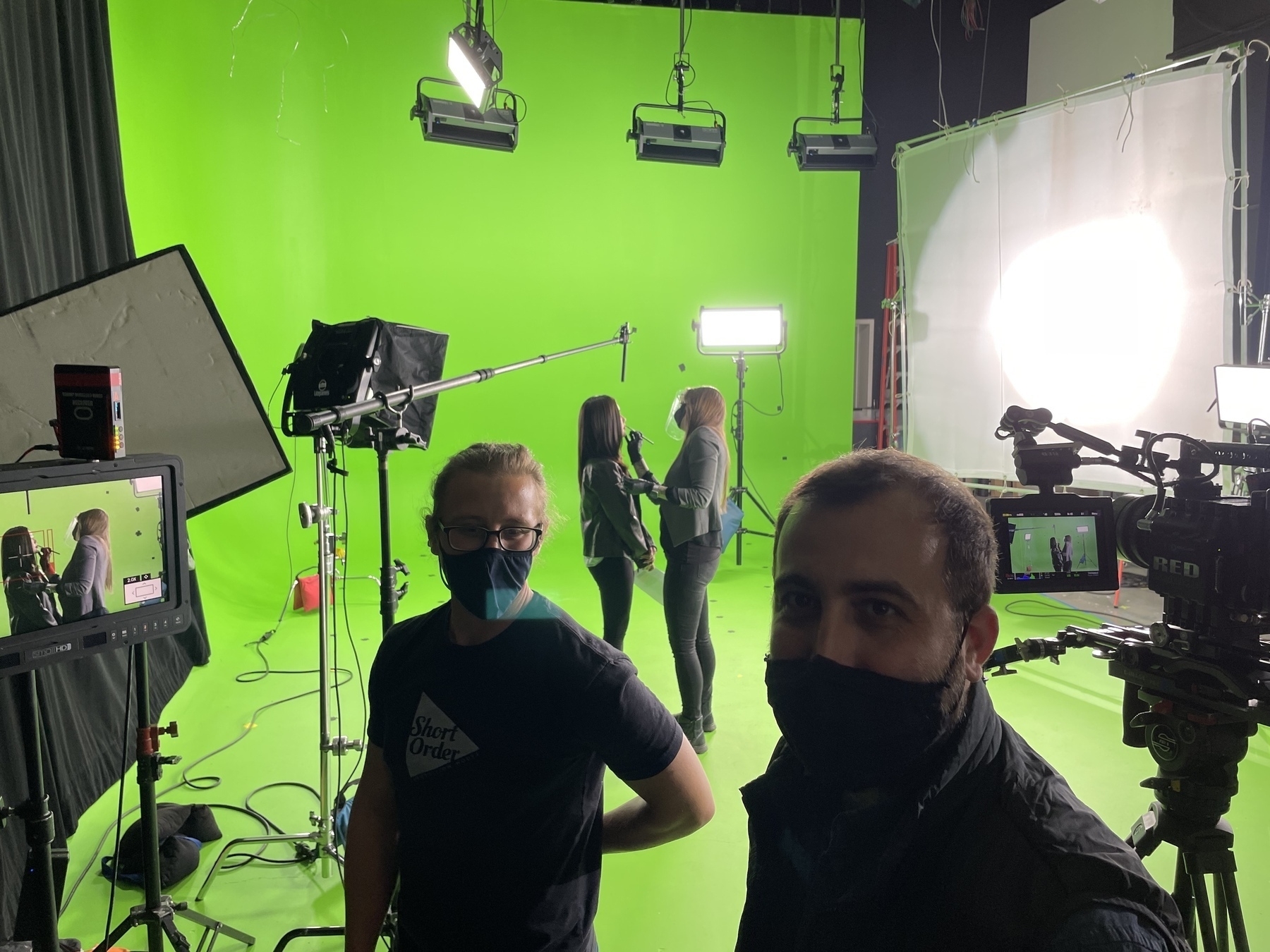
When directing an actor’s performance, as I was today, I am fundamentally unable to notice anything about what the actor is wearing. I can’t check lens focus. I don’t know what else is in frame. All I’m focused on is “Do I believe and understand this character?”
Now, I’m a particularly monofocused person in general and there are some people with the talent to take in a whole frame, every detail, and give actors good notes on top of that.
For the record, I could have a wider awareness of the frame, the shot, and how it fits into the edit if I had rehearsal time ahead of the shoot to dial in performance, but that’s rarely available in commercial work.
And I’m still never going to notice a stray hair.
I used to be able to creatively lead multiple projects at once, and I think I did an adequate job (customers were happy and came back), but it eventually led me to burnout, one of the reasons I switched roles.
Context switching between high stakes creative projects and further context switching to business/sales/management and the hundreds of little details involved in each of these… I spent a few years pulling an all-nighter at least once a week.
I really fucked myself up.
Creative projects, especially complex creative production projects, deserve focused, loving attention. And creative people can’t provide that level of attention to six projects at once, at least not healthily. And everyone deserves to be healthy.
It’s a treat when I can let myself become fully enveloped in a film production but in the meantime I’m very happy assisting at the idea stage and watching my amazing colleagues execute at a level they (usually mostly hopefully?) have the creative attention for.
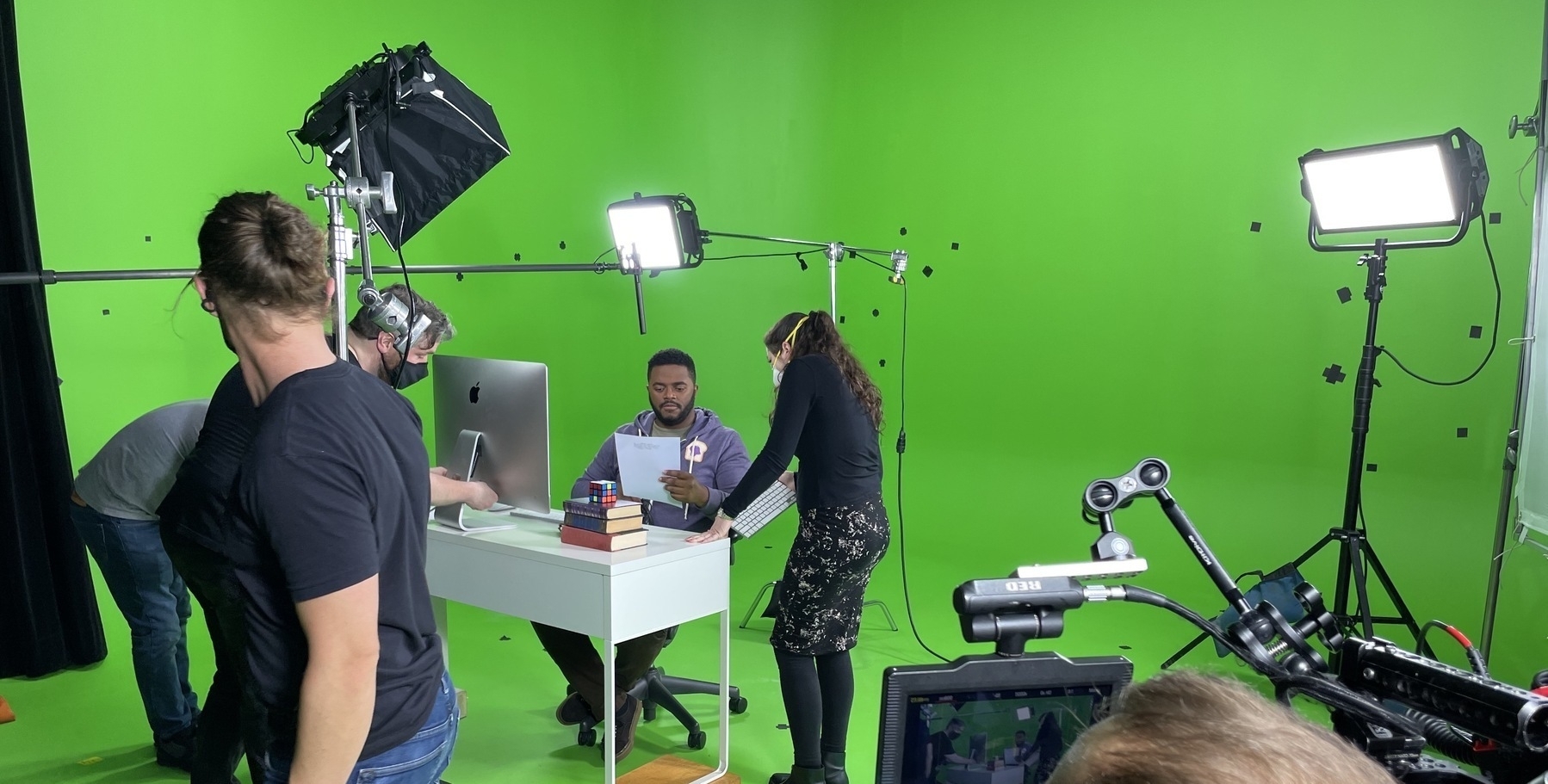
-
False Horns on Real Unicorns
An archetype from the 1982 movie The Last Unicorn: The witch Mommy Fortuna (played by Angela Lansbury) captures the Unicorn (Mia Farrow) for her Midnight Carnival. People no longer believe in unicorns so she puts a false horn on the real unicorn so people can see her.
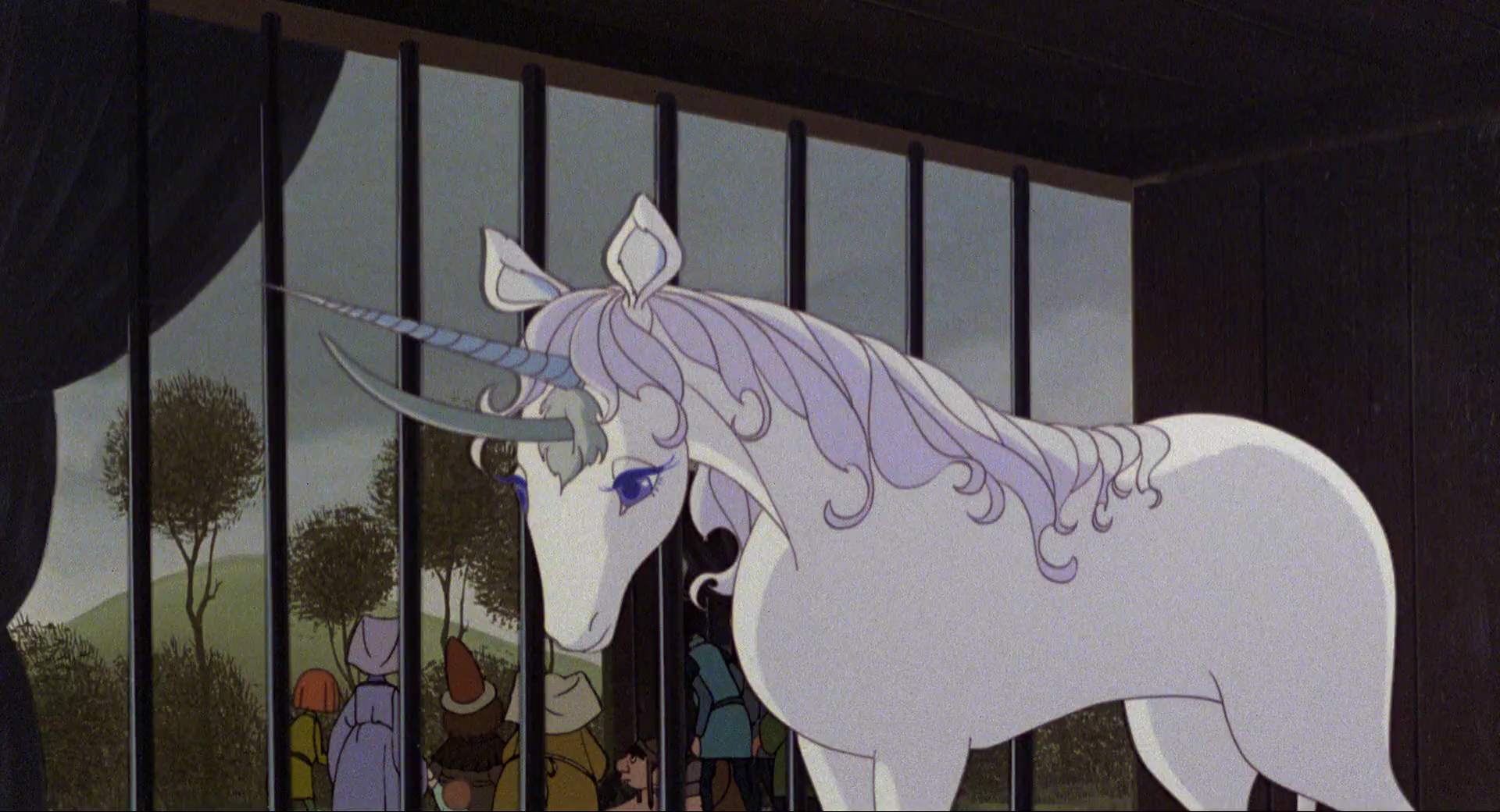
We put false horns on real unicorns because the emotional resonance of a simple fact often isn’t enough to inspire a desired change.
This is the game in politics/behavior change marketing: Whether our intentions are noble or nefarious, what false horn can we put on this unicorn?
Nature also puts false horns on real unicorns. When you avoid something smelly, you aren’t avoiding germs. The part of you that recoils from gross, smelly things doesn’t know what germs are. Your nose has evolved to put a false horn on that real, potentially pathogenic, unicorn.
When you tell your child that if they want to be big and strong or gain magical powers they’ll need to eat their vegetables, you’re putting a false horn on a real unicorn.
A lot of our societal debates aren’t even about unicorns themselves. They’re about which false horn applied to the unicorn will be most effective in getting everyone else to see the unicorn (which they can already see and are busy fashioning their own false horns for).
We are always stuck working with incomplete information but we need to act regardless. It seems to be pointing somewhere, and so we use what we can assure ourselves we are making the right choices. We put a false horn on the real unicorns.
100 years from now, scientists will think all of the false horns we’ve been putting on our Big Question Unicorns were SO CUTE as they proceed to invent a few more of their own.
On some level, all of our stories are simply false horns put on real unicorns so that we will be inspired to believe and follow the underlying lessons of those unicorns. This is our special ability.
We are soft, meaty, imperfect bodies and minds. We need a horn to grab ahold of.
-
What looks cool but has no business looking cool?
The first answers that come to my mind are sunglasses, smoking, and Spider-Man’s costume.
-
A Photographer's Business Card
If you’re a photographer, I have the best business card for you. It reuses beautiful things that will otherwise be thrown away, it’s unique (for now), and handing it to someone creates immediate delight, conversation, and connection.
This is my business card (it’s not this).
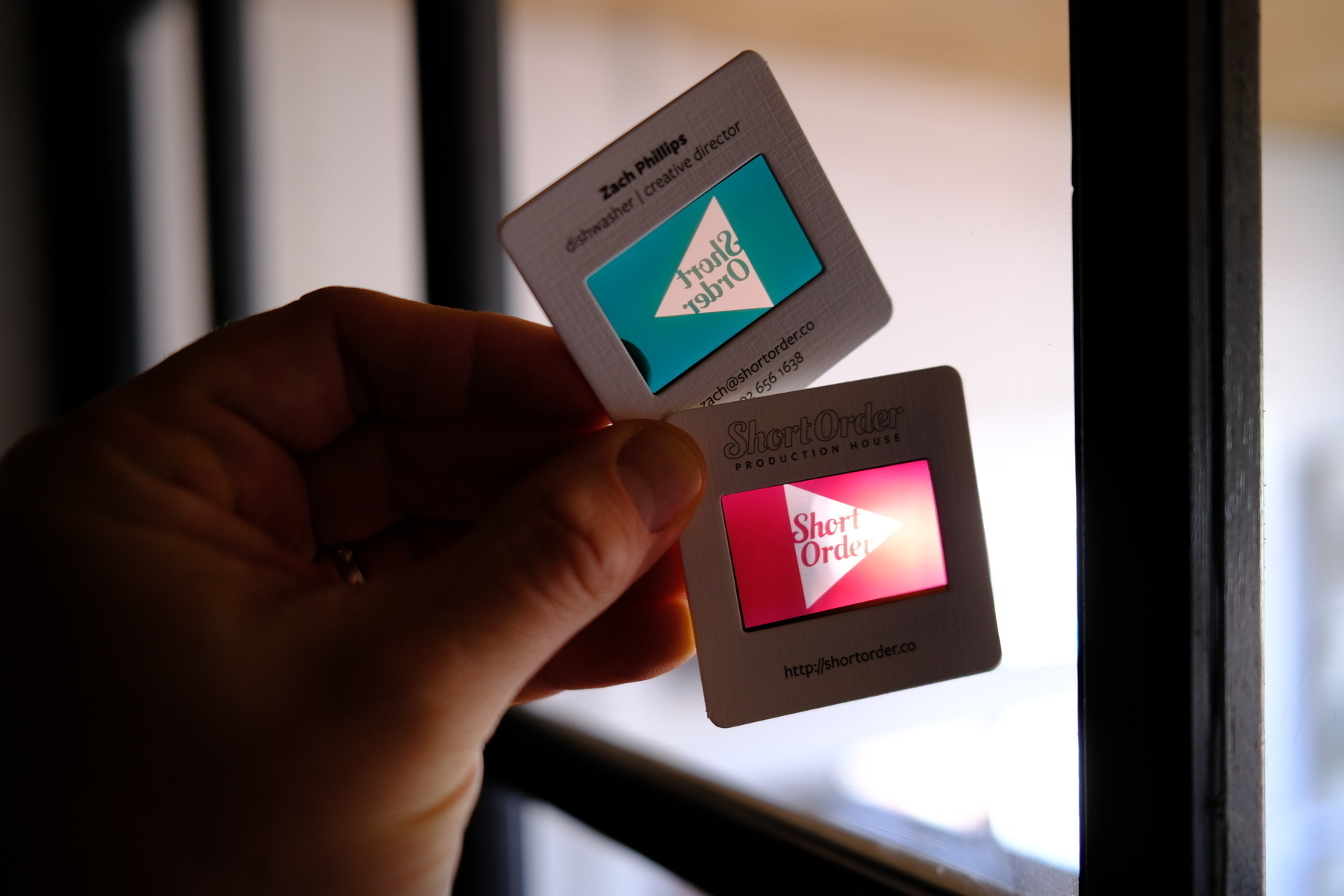
Right now, in your parents’ and grandparents’ closets and attics, there are thousands of these 35mm slides, intricately detailed, each one unique, and I can’t stress this enough, they are what that light was physically captured on, directly exposed at that time in that place.
Millions of these beautiful, one-of-a-kind objects are being thrown out every day. They should become the business cards of photographers everywhere. But photographers everywhere won’t take the time. YOU will, because you’re an interesting, fun-loving, enterprising go-getter.
My first stab at this idea was right out of college in 2005 using old slides and a rubber stamp. This is still the best way to do this, in my opinion. Rubber stamps have a beautiful quality all their own. The issue is that many slides are plastic or have writing all over them.
When I ultimately had my own company (film/video, not photography), using old slides didn’t make as much sense and it was more important that the logo be prominent. This defeats at least 61% of the coolness of the idea, and they’re also TERRIBLE to make:
Eventually we did find a great company, J.S. McCarthy Printers in Maine, who came up with a much better way to do these for us, still with a bit of manual assembly, but nothing like before.
The way we had done them previously (with our original name) was with die-cut stickers.
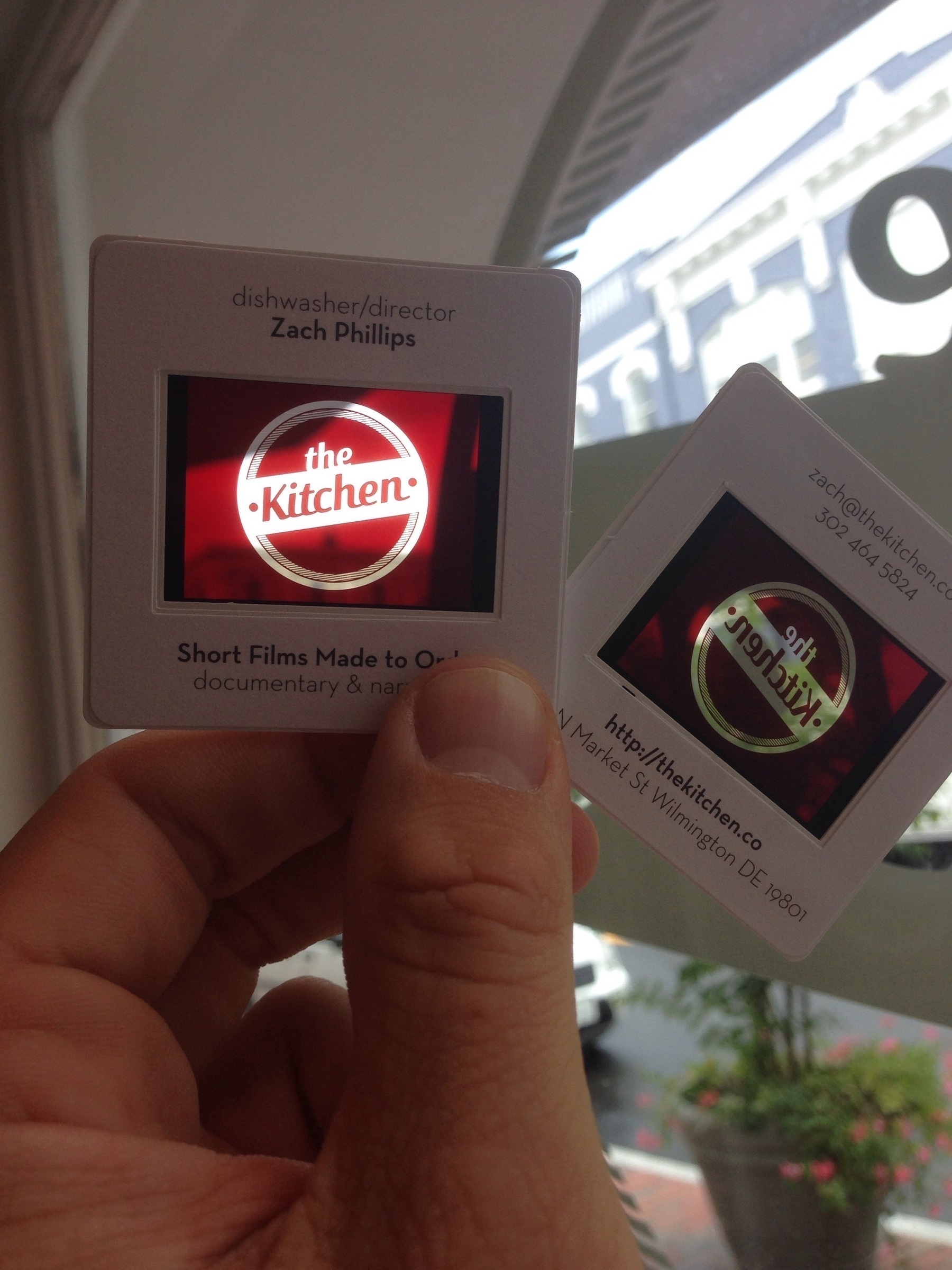 1st phott
1st phottNow that I’m reconnecting with photography and taking portraits of neighborhoods and strangers who live in those neighborhoods, I finally have a reason to do my original idea. I found some low-priced eBay auctions for old Kodachrome slides and I’m making a rubber stamp.

The cool thing about Kodachrome slides is that the colors are incredibly vibrant like an old Technicolor movie and one side is blank for rubber-stamping.
For those who don’t know, Kodachrome was a complicated development process with brilliant colors and it no longer exists.
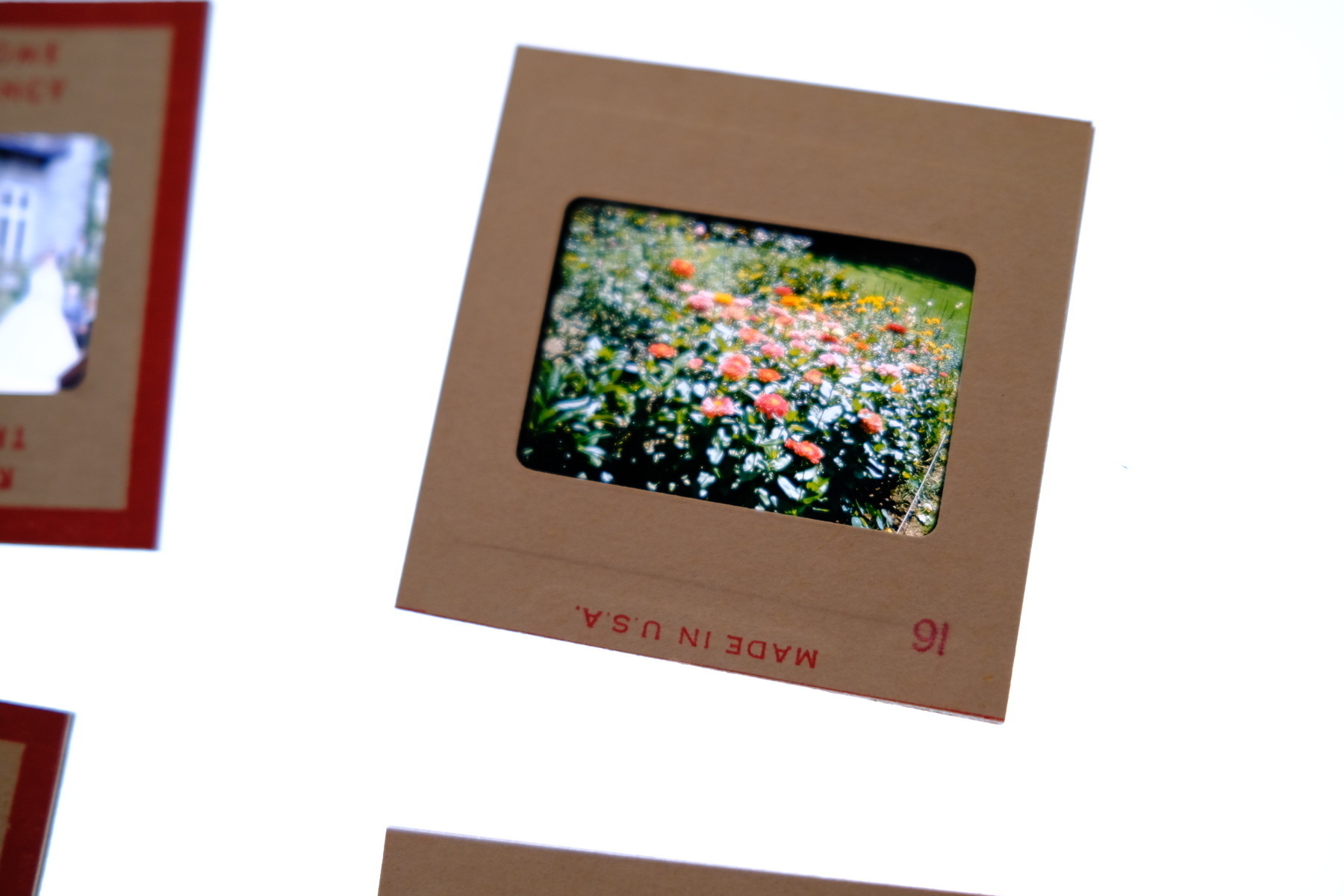
Now, when I meet a stranger whose photo I would like to take, in addition to dressing myself well and some other strategies I’m experimenting with, I’ll be able to hand them a piece of film with my name and a website where their portrait might show up.
You should totally use slides as your business card if you’re a photographer. And if you’re not a photographer, what might be out there, readily available, with a little bit of space on it where you could print or rubber stamp your contact info?
-
Reading Doesn't Have to Be a Thing
I picked up a few books yesterday and looked at them, nothing more. I opened the books and saw some words on the pages, thought a little bit about what the words said. I think I enjoyed this. It doesn’t have to be a Thing.
For the last many years, I’ve made reading a Thing. I’m doing it to Get Better, to Unlock Secrets, to Improve Myself.
That was miserable. Well, maybe not miserable, but it certainly wasn’t fun. And so eventually I stopped doing it.
I’m surrounded by books. I’ve got hundreds of them. These are books I’m interested in.
For the past 20 years, I’ve thought “I should read these.”
I read some of them. A lot of them actually, but only those that were justified. Also, I didn’t read them well enough.
Also, I’m a slow reader, so I read a dozen books about how to read faster.
I was almost 35 when I found out that all of you voracious, fast, "good readers" have been CHEATING FOR THIS ENTIRE TIME.
— Zach Phillips (100/100 posts) (@zachphillips) April 10, 2021
No one told me that reading doesn't have to be Alec Baldwin's voice in your head, speaking aloud every word of every sentence in perfect dramatic cadence. 👇Now the pile of books I was supposed to read at one point is so large that I walk past it, vaguely resentful. Under the resentment is a sadness.
I miss exploring.
Exploring is a different concept from reading, at least the way I’ve perverted the concept of reading.
Exploring isn’t a Thing. Reading has become a Thing. I’m done with Reading.
So I’m going to go grab another book off the shelf, look at it, see what it looks like on the pages for a few minutes. Maybe there will be something there. If so, great. If not, it doesn’t matter. It doesn’t have to be a Thing.
Holy shit Jefferson Davis eloped with Zachary Taylor’s daughter (Zachary Taylor hated his ass) and then she immediately died and then Davis won some war shit for Zachary Taylor and Zachary Taylor said his daughter was a better judge of character than he was.
How ‘bout that shit?
-
Kintsukuroi
One of my very favorite concepts in the infinite ocean of metaphor is kintsukuroi, the Japanese art of repairing broken pottery with resin mixed with precious metals. The repaired object is both stronger and more beautiful than the original.
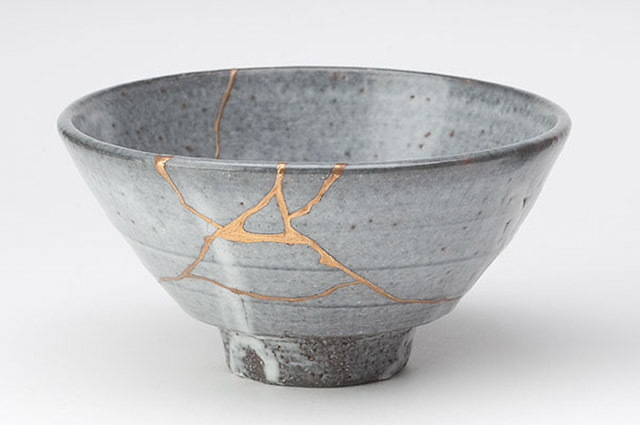
Kintsukuroi is a reminder that things are worth fixing, and not simply to recoup losses.
Kintsukuroi is a reminder that much of life should be spent fixing things that are broken, in ourselves, in others, in the world around us.
Kintsukuroi is a reminder that no matter how broken we feel at times, our brokenness is ultimately no more than an expression of our beauty.
Kintsukuroi is a reminder that every setback can make us stronger and better in a way that only a setback can.
Kintsukuroi is a reminder that life is messy, that evolution is a series of mistakes, that growth in resilience is inevitable, unstoppable, automatic.
Someday I would love to own one of these objects or make one myself. I can’t think of a more beautiful or hopeful artistic expression of the truth of lived experience.
-
Subvocalization
I was almost 35 when I found out that all of you voracious, fast, “good readers” have been CHEATING FOR THIS ENTIRE TIME.
No one told me that reading doesn’t have to be Alec Baldwin’s voice in your head, speaking aloud every word of every sentence in perfect dramatic cadence.
There’s a word for this, it’s called “subvocalization,” and it’s why it takes me two months to read a book that my wife can “read” in three days. It’s also one of the reasons I’ve felt like a stupid and inadequate reader my whole life.
I’ve tried six or eleven methods to stop subvocalizing but it always goes a) this is uncomfortable and disrespectful to the person who has crafted these words, b) I’m cheating, c) why am I cheating?, d) am I getting any of this?, and e) back to Alec Baldwin’s dulcet tones.
Imagine a child reading aloud in class, tripping on a word or an incorrect emphasis in a sentence, then going back and starting that sentence again. This is how I read a book. This is what’s going on in my head. No one told me there was any other way to do this.
I guess I should have deduced from my basic understanding of physics and the time/space continuum when I saw the reading list of a graduate student or a bunch of discovery material in the hands of a lawyer that these motherfuckers aren’t actually reading this stuff.
But why didn’t you at least tell people like me the secret, like “Hey Zach, listen… no one is reading every word of these books. That’s not a thing. That takes forever. We just kind of figure out what the ideas are and move along.”
There have been a lot of people who have helped me in my life, but somehow, it never even occurred to a “fast reader” to let me know that they aren’t actually reading and that I can stop feeling like a big dummy.
In fact when I’ve told “fast readers” of my slowness, they’ve said “Oh, that is slow, poor guy.” That’s it.
I’d like to be charitable and say it’s just that they take it for granted but that would betray that upon discovering how to cheat they hid it for life.
Not charitable.
The one casualty of my subvocalization (listen to me, talking about actually reading words like it’s some kind of disease) is that I haven’t found time to read fiction as an adult. I write fiction, and I enjoy reading it, but I have work and kids and… that’s a lot of time.
You better believe that even if one day I do learn to consume nonfiction and history rapidly without subvocalization, I am not reading fiction that way. Hell no. Someone wrote that shit. There are characters experiencing things and shit. Every em dash has—dramatic meaning.
Are these words or what? Why spend time crafting a decent sentence when people are going to read them like bullets on a stock PowerPoint slide?
The truth is I’m bitter. I’ve got a bookcase full of books and I’ll never have time to read them all the way I want to.
I’m not bitter at the “fast readers” for this, because they don’t have time to read them either. I’m bitter at them because they’ll say they did.